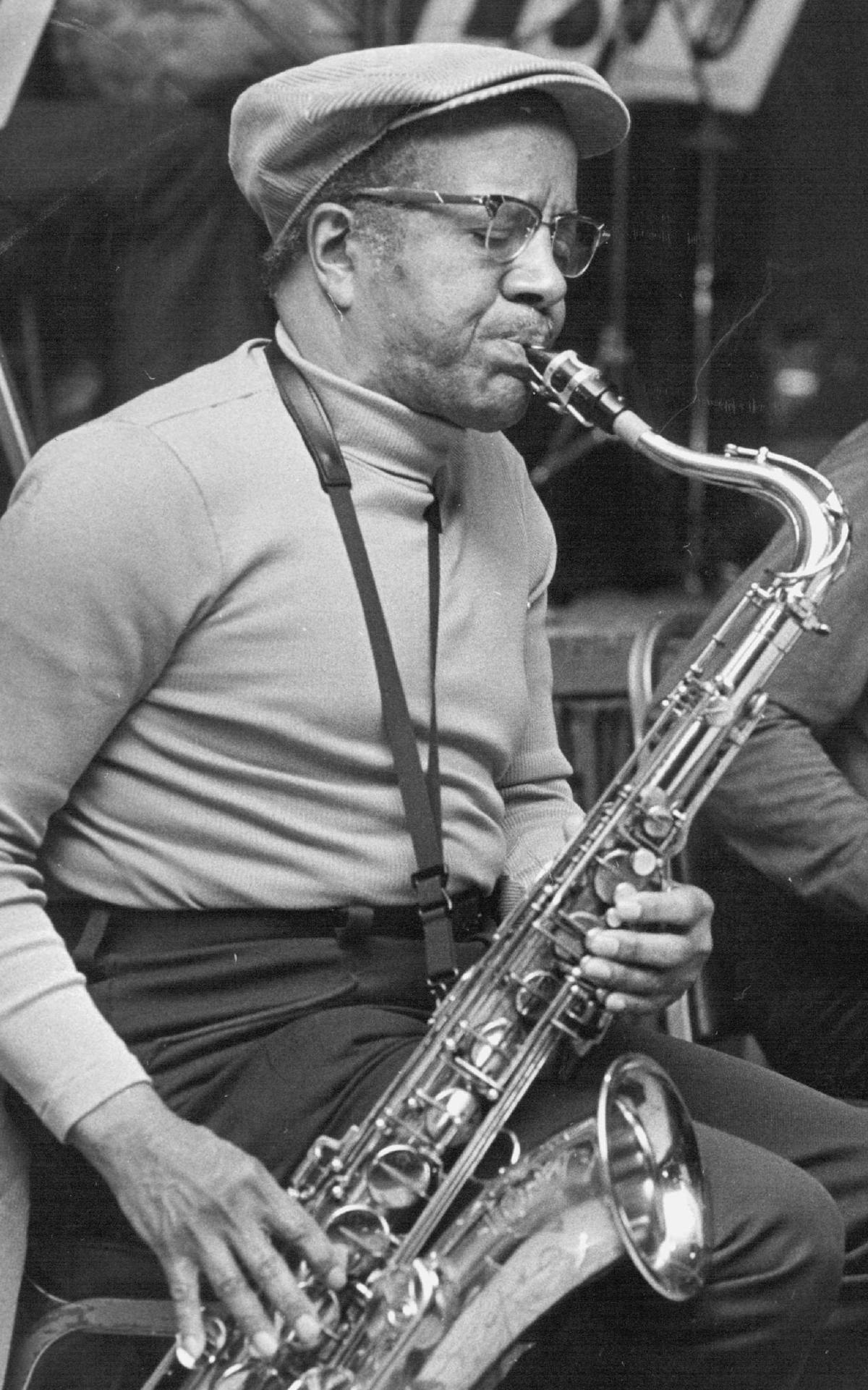
Photo by Don Black, Minneapolis Star Tribune.
Irv Williams
The jazz saxophonist toured with Ella Fitzgerald, recorded with Dinah Washington and declined invitations to join Duke Ellington and Count Basie. Though he had world-class talent, Williams preferred to stay in the Twin Cities, where he moved after World War II and raised his children. A music teacher at St. Paul Central High School, he recorded several albums and backed famous names such as Tony Bennett, Billy Eckstine and Andy Williams when they came to town. With an easy, unshowy style that earned him the moniker “Mr. Smooth,” the indefatigable sax man played a weekly gig at the Dakota in Minneapolis into his late 90s. He died in 2019 at 100.
“Irv Williams was the first sax player I heard when coming to town in 1987 and I was blown away by the smoothness of his playing and execution. I definitely tout him as the Ambassador of the Tenor Sax here in the Twin Cities and abroad.”
— Walter Chancellor Jr., jazz and R&B saxophonist and producer
Listen on Youtube
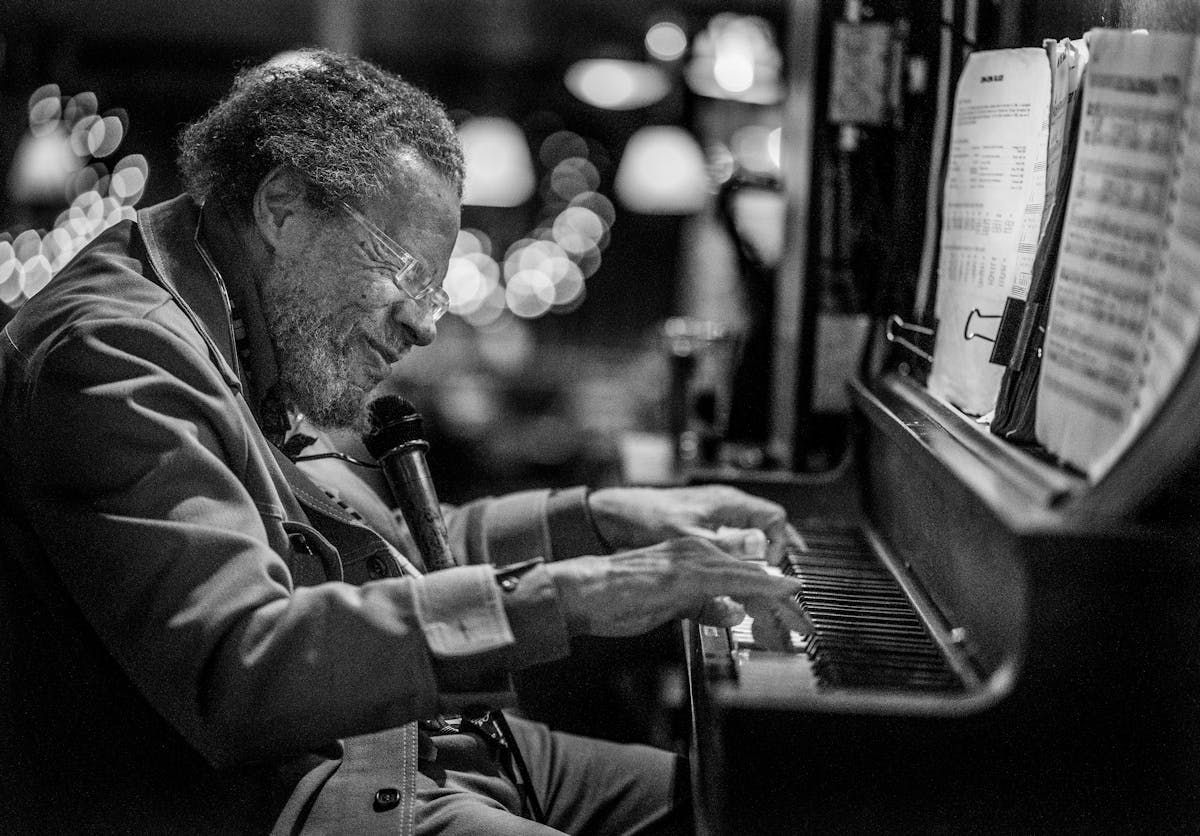
Photo by Richard Tsong-Taatarii, Star Tribune.
Cornbread Harris
In 1955, he played piano on Minnesota’s first rock ’n’ roll hit, Augie Garcia’s “Hi Yo Silver.” Last summer, he delivered one of the first pandemic-era virtual concerts from the rubble of Lake Street, where he pleaded in a new song, “Put the world back together.” In between, the elder James Harris (Jimmy Jam is his son) has entertained generations of Minnesota music fans with his jazzy, Louis Armstrong-cool piano ballads and R&B boogie via countless supper-club shows and a handful of his own warm, soulful records. At 93, he’s still eager for his next gig.
“He is a crowd-pleaser who knows what an audience wants. He can be sophisticated high-society-wise, or he can get down home with the nitty-gritty, depending on the crowd. But none of that folksy sugarcoating can obscure the high caliber or the hard-won quality that his musicianship displays, year after year.”
— Jacquie Maddix, DJ for KFAI, 90.3 and 106.7 FM, and singer with Lady J Griot & Her Root Doctors
Listen on Youtube
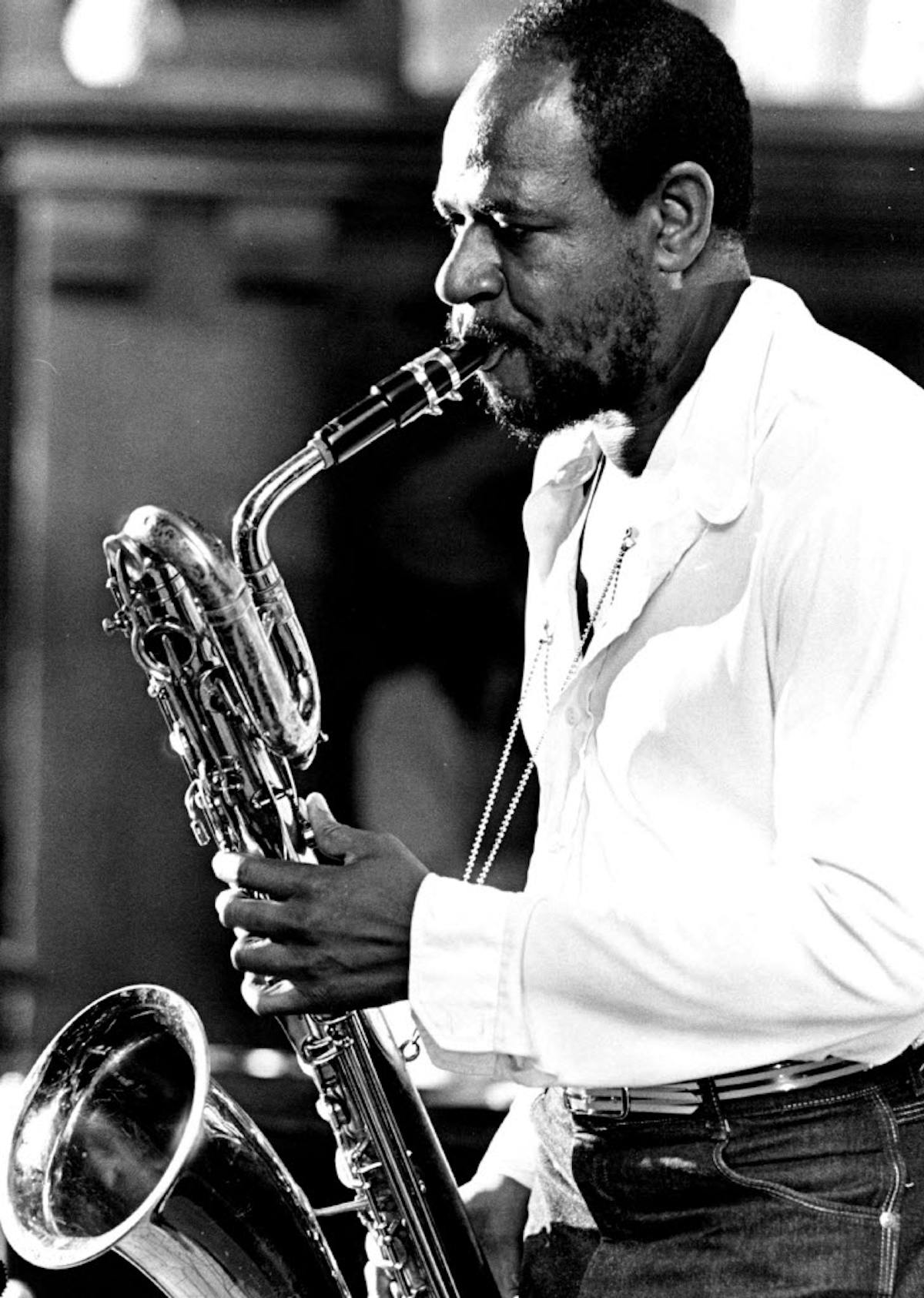
Photo by David Brewster, Star Tribune.
Morris Wilson
In the 1970s and ’80s, Wilson was the man when it came to jazz saxophone in the Twin Cities. But he also could play R&B and blues. He toured with the Temptations and gigged with B.B. King and Muddy Waters. A fierce, uncompromising artist, he portrayed jazz sax legend Lester Young in the 1985 Penumbra Theatre production “The Resurrection of Lady Lester” and also mentored many musicians, including young players at two Minneapolis junior high schools. He died in 2016 at age 76.
“He was one of the greatest saxophone players. Smooth and sexy, laid back for lovers but versatile like the jazz fusion of Miles Davis.”
— Walter Banks, aka Q Bear, longtime DJ on KMOJ, 89.9 FM
Listen on Youtube
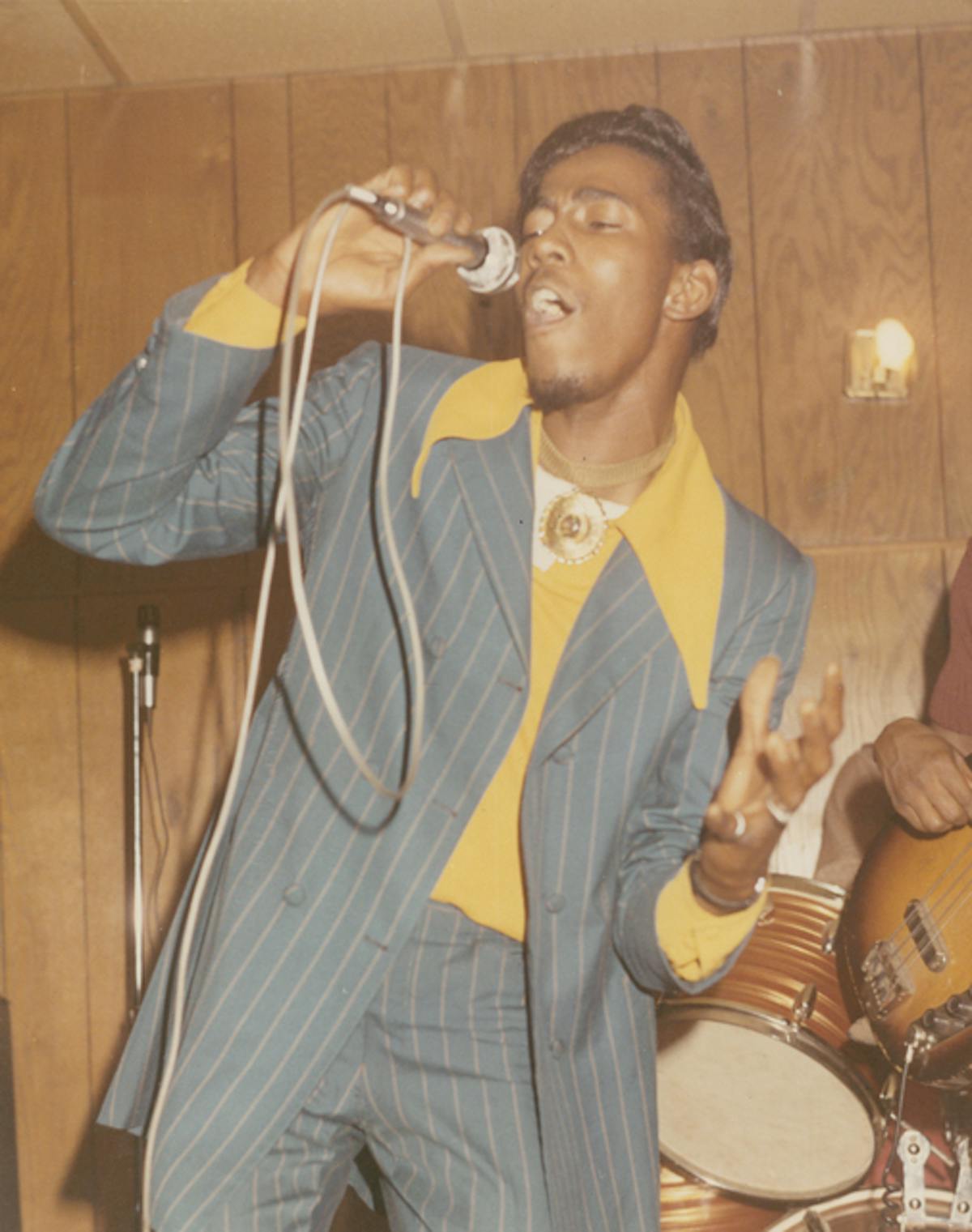
Photo by Charles Chamblis, provided by the Minnesota Historical Society.
Maurice McKinnies
The Twin Cities’ nearest thing to James Brown until Prince came along, he left Florida at age 16 to tour with “Ball and Chain” singer Big Maybelle and landed in north Minneapolis in time to join the Big M’s for 1958’s “Silent Lover,” cited as Minnesota’s first R&B single. Fronting the Blazers and later the Champions in the ’60s, he packed such legendary dance venues as the Cozy Bar and King Solomon’s Mines. The Champions’ single “Sock-a-Poo-Poo ’69” for Minneapolis’ pioneering Black and Proud label caught on nationally, but McKinnies’ star faded after he moved to California in the early ’70s. He passed away in 2018.
“In his day, he was it. Whatever band Maurice was in in the ’60s, people had to go see it. He was of the Ike Turner mold: a thin, tough bandleader who was really hard on his band. But it’s hard to argue with the music.”
— Maurice Jacox, singer/saxophonist best known with Willie & the Bees and as a solo performer
Listen on Youtube
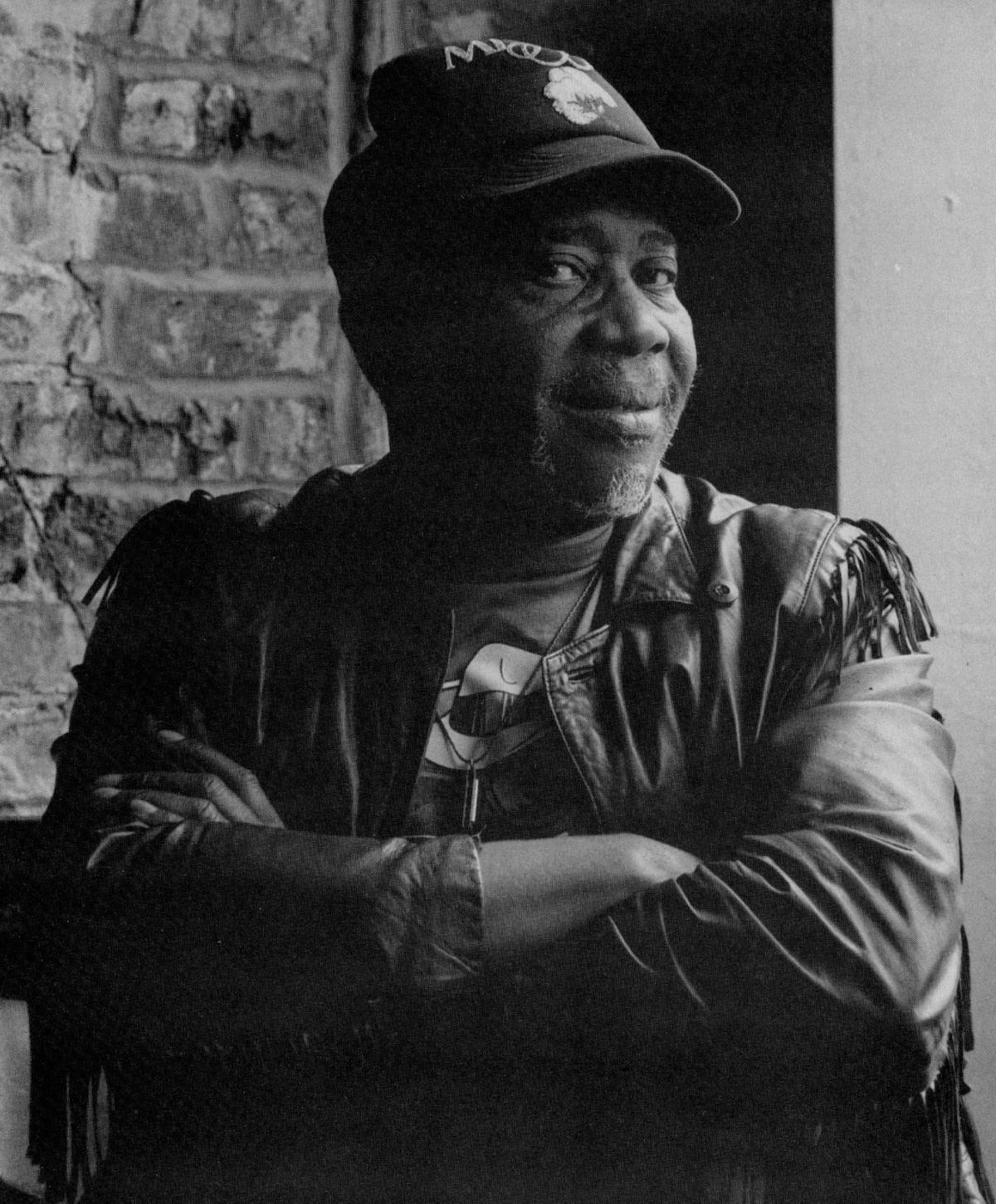
Photo provided by Blue Moon Records.
Mojo Buford
Minnesota’s strongest connection to the blues from the other end of the big river, Mississippi native George Buford blew harmonica in Muddy Waters’ band off and on from the late ’50s until 1983, when he served as pallbearer at his boss’ funeral. He came to Minneapolis with Waters in 1962 and stayed to start his own band, becoming popular among blue-collar crowds at Mattie’s Ribs and hippie kids at the Labor Temple. He had a handful of albums, including last year’s “Mojo Workin’,” from 1969 sessions. His last gig was with fellow harpman James Cotton just a month before dying of cancer in 2017 at age 81.
“He took young players under his wing. He taught them how to dress, how to conduct business and how to present yourself on stage. Mojo and the late Sonny Rodgers set the stage for the Minnesota bands that created a sound so similar to the Chess Records classic blues that those same Minnesota musicians became requested players overseas.”
— Jacquie Maddix, DJ for KFAI, 90.3 and 106.7 FM, and singer with Lady J Griot & Her Root Doctors
Listen on Youtube
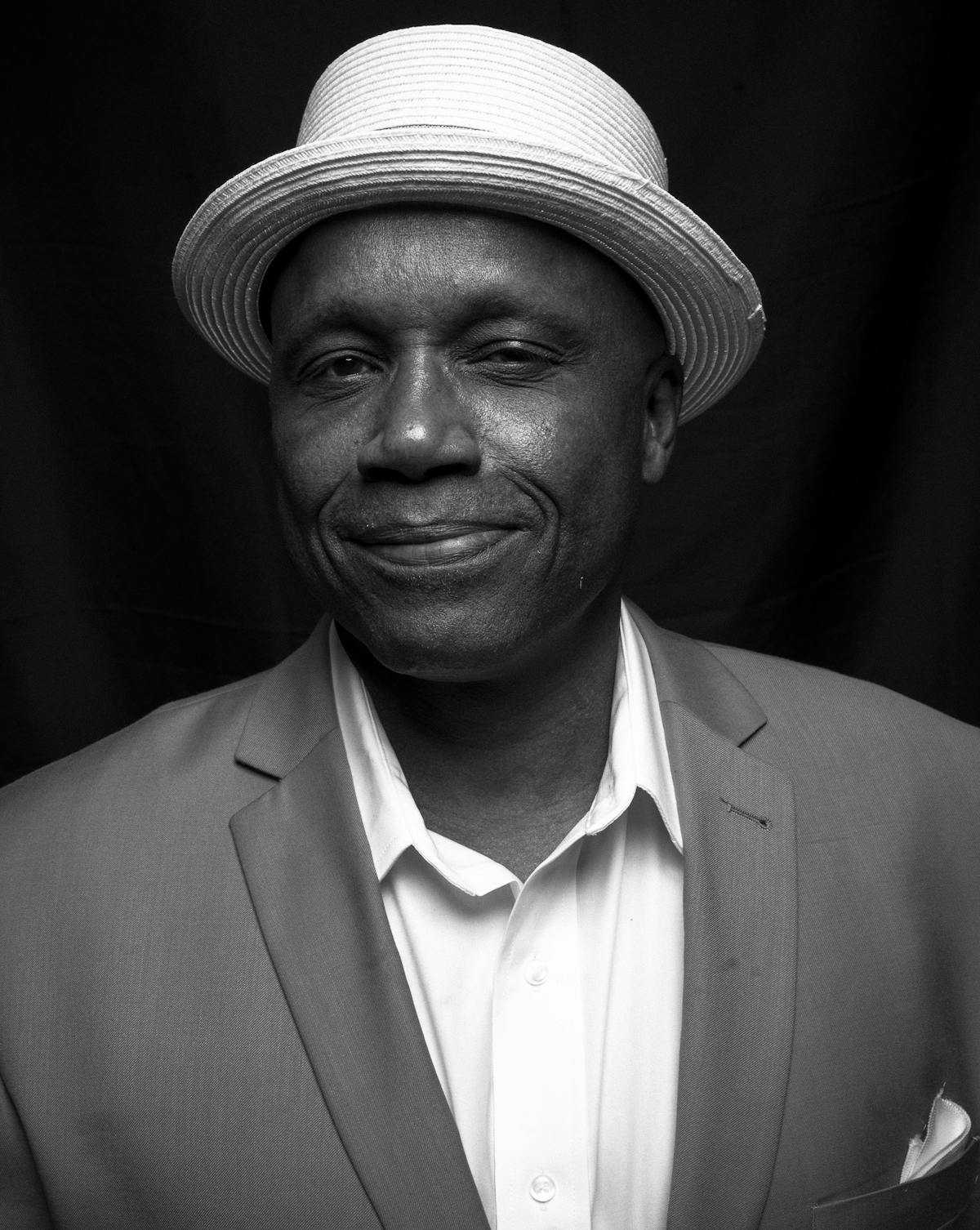
Provided photo by Nate Ryan.
Sonny Knight
After his band steamrollered the trendsetting South by Southwest music festival in 2014, Knight had only one complaint: The crowds and chaos reminded him of the Vietnam War. A St. Paul teen singer with the Blue Jays and the Cymbals before he was drafted in 1965, Knight bounced back and spent much of the ’70s singing with the psychedelic R&B band Haze, but it was his second comeback in his 60s that really caught fire. Sonny Knight & the Lakers, which grew out of the acclaimed 2012 compilation “Twin Cities Funk & Soul (1964-1975),” released three albums, packed First Avenue and toured Europe. He died in 2017 at age 69.
“He sealed his place in Minnesota music history as a recording artist back in the 1960s. Too bad we all didn’t figure that out until almost 50 years later. Sonny Knight & the Lakers created some soulful classics before his death, contributions to the Minnesota music scene that alone should reserve his place [on this list].”
— Derrick Stevens, producer for Minnesota Public Radio/The Current and former MC Skat Kat
Listen on Youtube
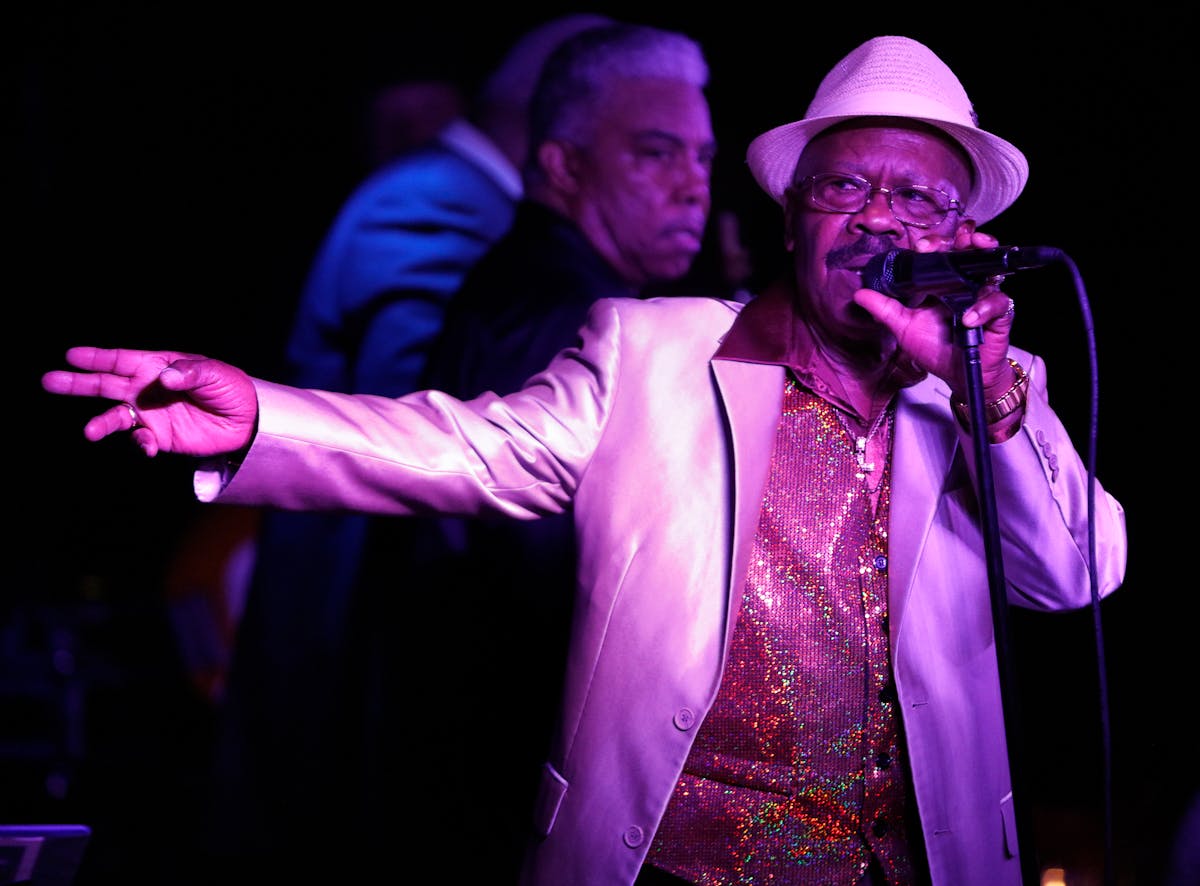
Photo by Tom Wallace, Star Tribune.
Willie Walker
He hated the nickname “Wee” Willie Walker — given by Memphis label Goldwax in reference to his 5-foot-5 stature — but the honey-voiced soul singer enjoyed the fact that European music companies were still calling him up under that name four decades after his chart-scratching 1967 single “There Goes My Used to Be.” Around the Twin Cities, where he relocated in 1959 as a gospel singer, Walker sang with the Exciters, the Val-Dons and Willie & the Bees in the 1960s-70s, then later the Butanes and Paul Metsa. After retiring from a medical clinic, he toured with the Anthony Paule Soul Orchestra and hit blues events around the world, including Chile a week before he died in 2019 at age 77.
“At the time of his death, he was the greatest living soul singer, period. He was the last of his generation and was at the top of his game in his 70s. He didn’t have a ‘falsetto’ voice; he could just naturally sing that high. And he was as wonderful a man as he was a singer.”
— Maurice Jacox, singer/saxophonist best known with Willie & the Bees and as a solo performer
Listen on Youtube
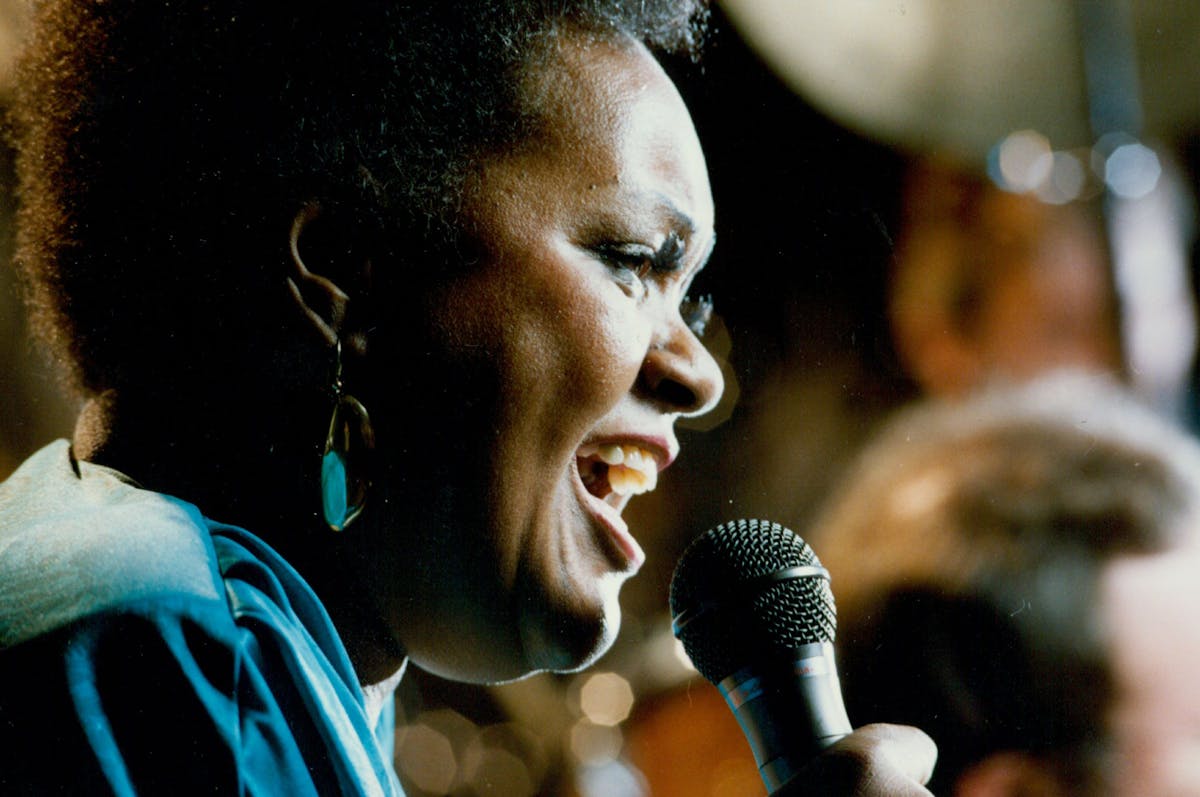
Photo by David Brewster, Star Tribune.
Shirley Witherspoon
While singing at Telemark Ski Resort near Hayward, Wis., the Minneapolis North High grad was discovered by the one and only Duke Ellington. Her first gig with the great bandleader: Richard Nixon’s inauguration in 1969. After a year with the Duke and a hiatus from music, the R&B-infused jazz singer returned in the late ’70s and became a mainstay with the Wolverines jazz orchestra and her own combo. She was the inaugural headliner in 1985 for the now-indispensable Dakota jazz club. Witherspoon also starred in theater productions about Billie Holiday and Bessie Smith. She died in 2003 at age 62.
“Shirley Witherspoon was a singer’s singer. She pulled you in with her rich, soulful sound. Her vocals caressed you with full-bodied tones — silky smooth, yet robust. She sang with a sure, confident soulfulness. She was just a pleasure to listen to, a great entertainer.”
— Ginger Commodore, singer with Moore by Four and solo artist
Listen on Youtube
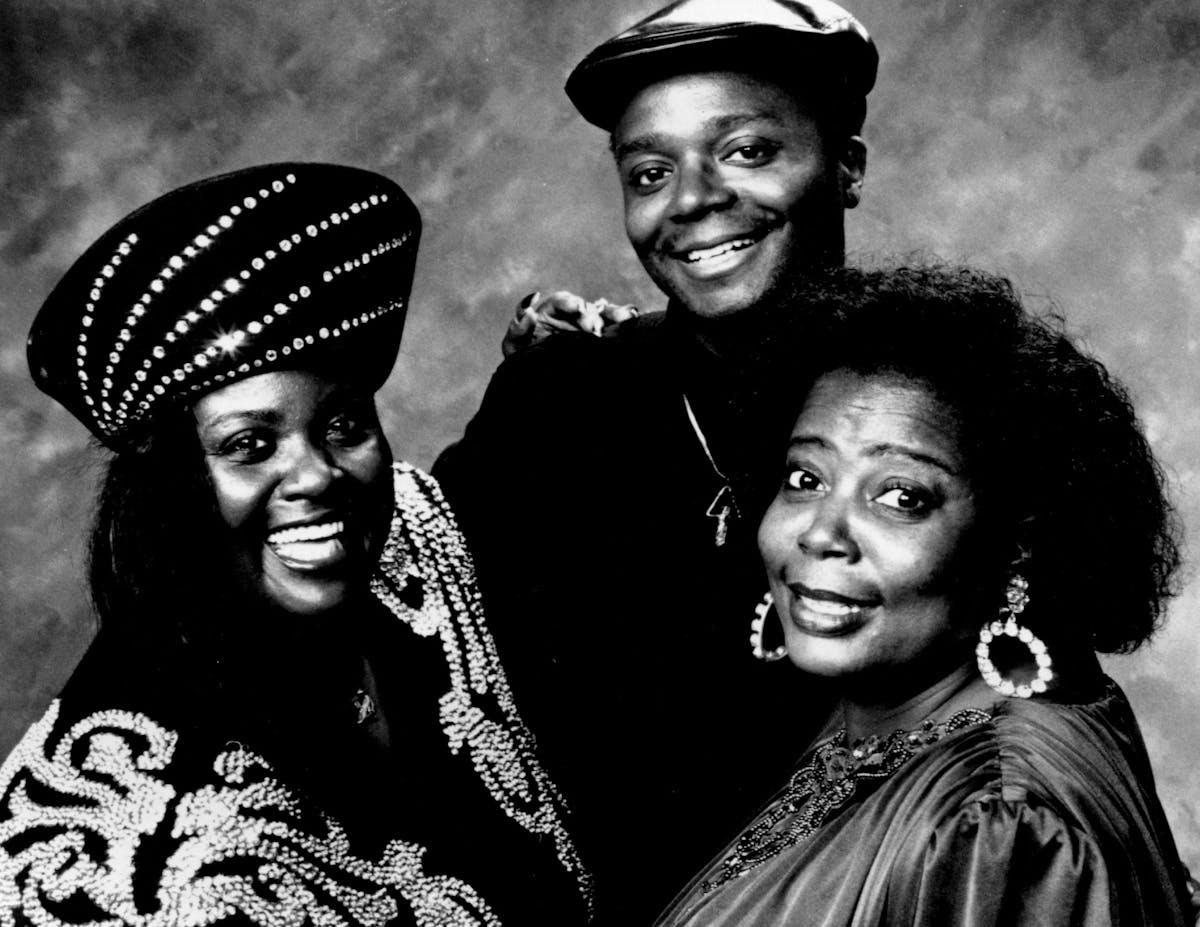
The Henry/Duncan/Matthews Band, from left to right: Gwen Matthews, Bruce Henry and Debbie Duncan. Provided photo.
Gwen Matthews
In the 1970s, the Chicago native rocked Twin Cities clubs with the group Passage and recorded jingles for big-time clients such as Northwest Airlines and General Mills. Ever versatile, Matthews did a stint in Rupert’s Orchestra, performed in a jazz-soul trio with Debbie Duncan and Bruce Henry, and spent 11 years in Los Angeles working with Stevie Wonder, Philip Bailey and Kenny Rogers. Her résumé includes performing at jazz festivals in Europe and teaching voice lessons. She currently sings in the ever-versatile group Synergy.
“[Her] voice is rich and funky. Her music is full of lilting melodies, soulful rhythms and often is interjected with some jovial scatting. She moves your spirit. And at some point in her set, you are bound to hear someone in the crowd shout out: ‘You’d better sing, Gwen!’ ”
— Ginger Commodore, singer with Moore by Four and solo artist
Listen on Youtube

Gary Hines, music director and producer for Sounds of Blackness. Photo by Leila Navidi, Star Tribune.
Sounds of Blackness
An outgrowth of the Macalester College Black Voices, the choral and instrumental group took their name in 1971 when Gary Hines became director. They pride themselves on exploring African American music from spirituals to hip-hop. Since recording with Jimmy Jam and Terry Lewis in 1991, the mighty Sounds have won three Grammys and seven Stellar Awards, headlined Harlem’s Apollo Theater, performed at the Olympics, soccer’s World Cup and the White House (five times), worked with such superstars as Aretha Franklin and Elton John, and made 11 albums. Their membership may have changed, but not their commitment.
“Gary Hines is the griot of Minnesota. He proudly promotes and curates music from all over the spectrum of African American music and history. Who else has been so successful at combining activism, history and spirituality while reaching the highest heights of the music business?”
— Bruce Henry, well-traveled singer who has lived in Minneapolis on and off again
Listen on Youtube
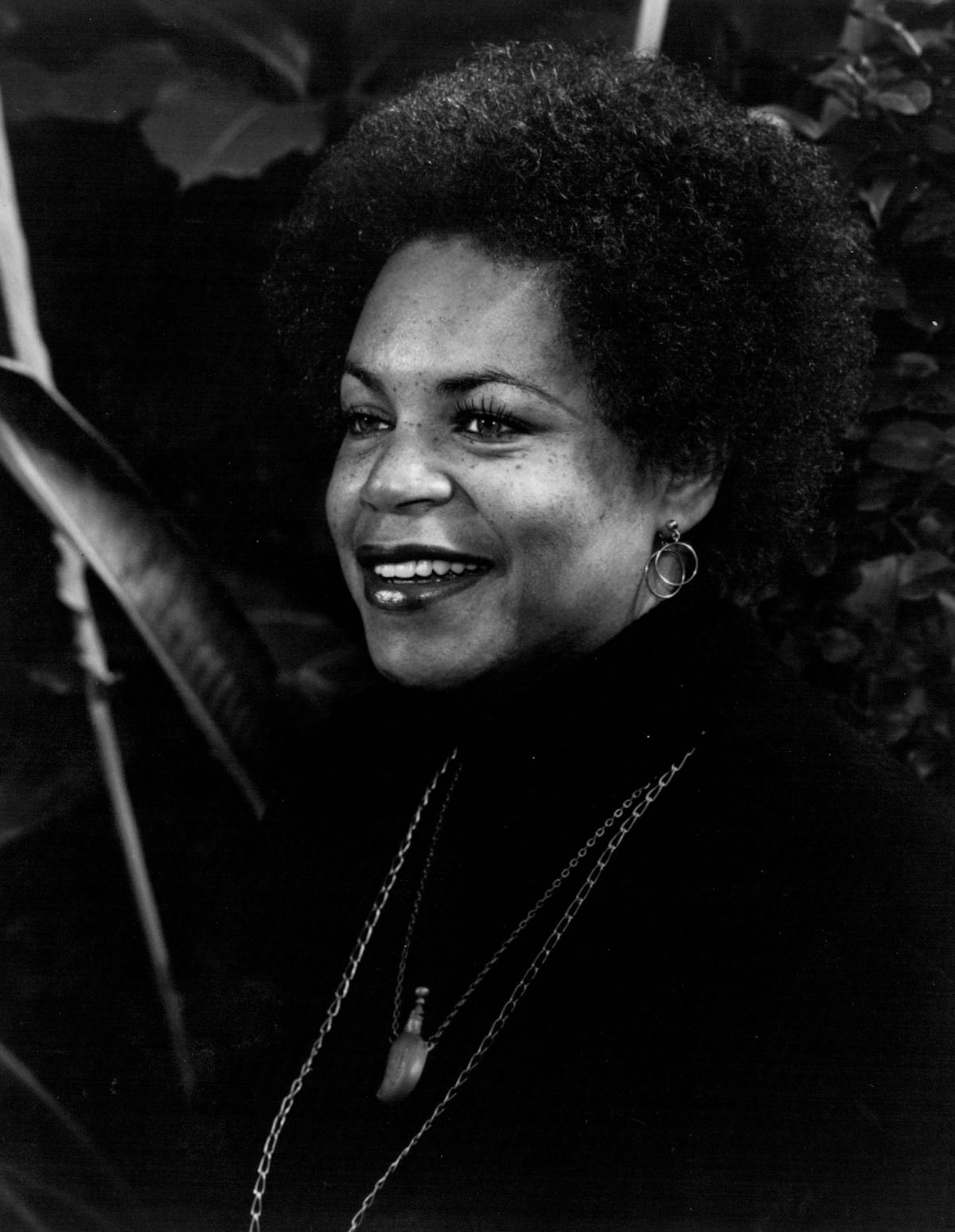
Provided photo.
Roberta Davis
A classically trained vocalist who performed in “Porgy and Bess” and other productions, the St. Paul native segued into jazz in the 1970s. Not only did she become a premier jazz singer in the Twin Cities, opening for the likes of Herbie Hancock, Ronnie Laws and Stanley Turrentine, but she became better known in New York and abroad than in her hometown. Davis taught at the prestigious Berklee College of Music as well as in the Twin Cities. Her daughter, Yolande Bruce, followed in her footsteps, starring with Moore by Four. Davis died in 1999 at age 61.
“Listening to Roberta Davis was like receiving an impromptu voice lesson. But you didn’t know you were in class. She smoothly presented classic jazz standards, gently soaring to the high notes then swooping to grab the low ones.”
— Ginger Commodore, singer with Moore by Four and solo artist
Listen on Youtube
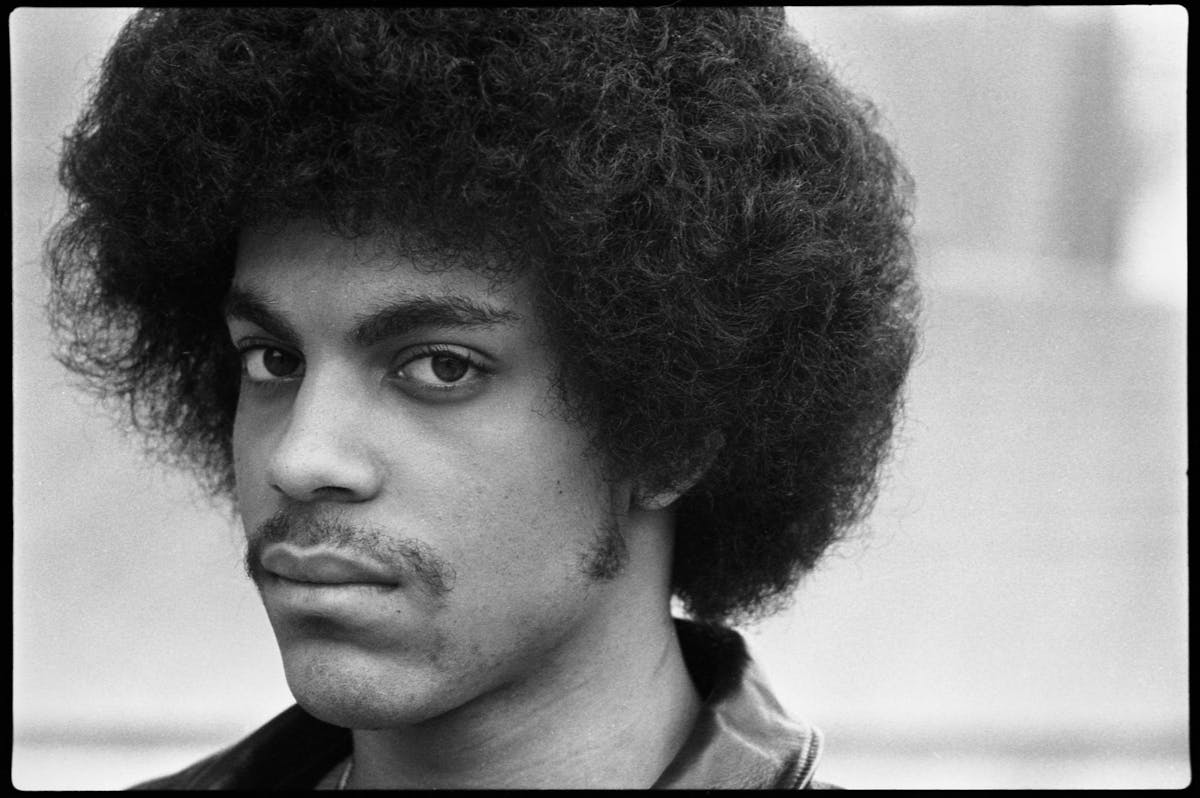
Prince at 19 years old. Photo by Darlene Pfister, Minneapolis Tribune, courtesy of the Minnesota Historical Society.
Prince
The product of Minneapolis public schools and his own imagination, Prince Rogers Nelson — the shy 5-foot-2 son of a jazz pianist and a lounge singer — developed into the most complete rock star in history. Not only did he compose, arrange, perform and produce his music by himself, but he conceived the visuals, staging and marketing, and dazzled onstage. He also tried to reinvent the business while taking the record industry into the internet age. Since his 1978 debut, he released 39 studio albums and counting — his vault contains so many unreleased recordings — and landed in the Rock and Roll Hall of Fame in 2004. He died in 2016 at age 57.
“Prince was the most influential musician of this generation. His creativity and output is unparalleled. Plus, he expanded the boundaries of musicians getting their music heard and monetized outside of the major record labels. He was funk, rock, soul, punk and anything that stunk!”
— Fancy Ray McCloney, Minneapolis comedian and pitchman
Listen on Youtube
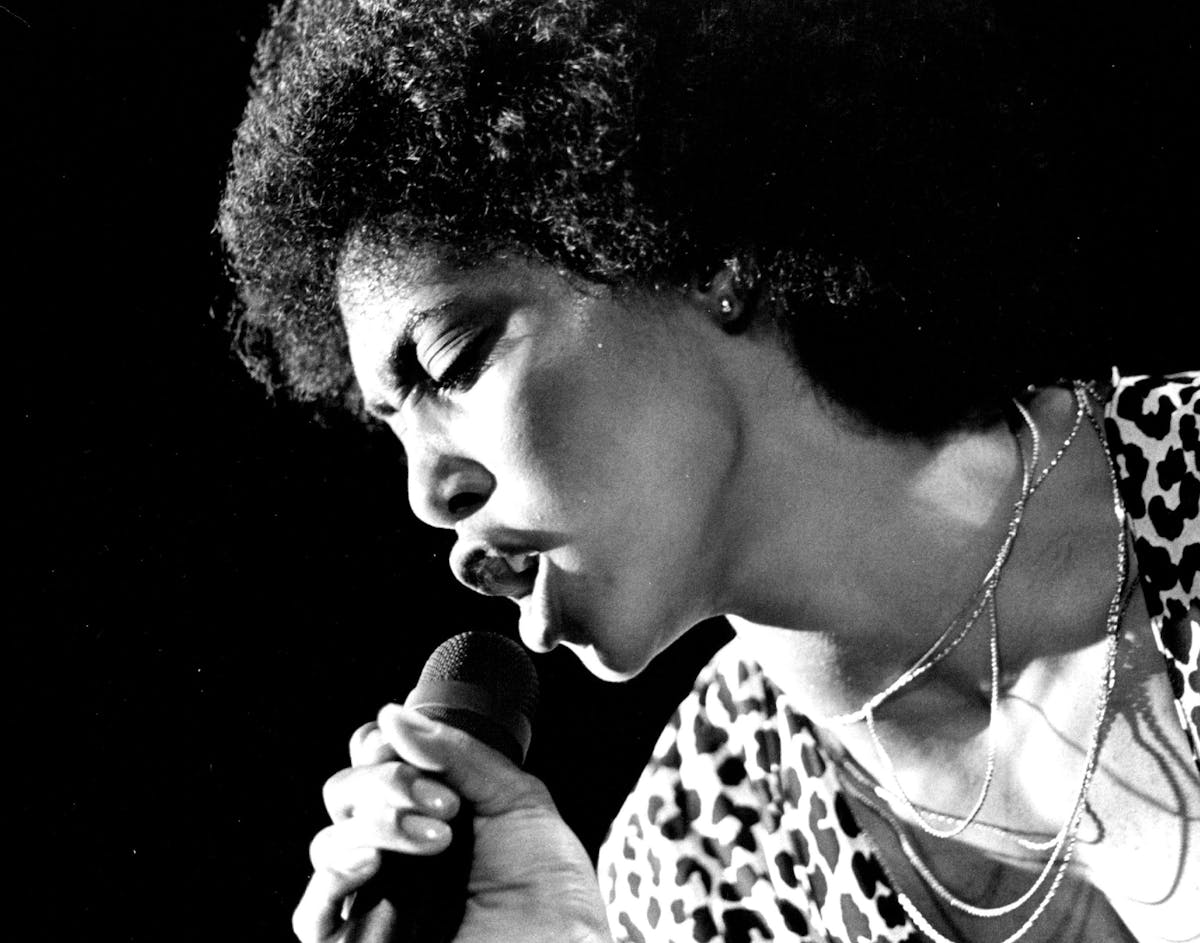
Photo by David Brewster, Star Tribune.
Cynthia Johnson
Aside from Prince, perhaps no singer from the Twin Cities has been heard by more people. She was already big on the scene with the Jimmy Jam/Terry Lewis group Flyte Tyme when producer Steven Greenberg recruited her to sing “Funkytown” with his studio project Lipps Inc. With her feisty, vocoder-manipulated vocals on top, the song went No. 1 in 28 countries in 1980 and has been featured in 50-plus movies. Johnson went on to sing on Prince and Maceo Parker projects, did a stint in Dr. Mambo’s Combo and became a regular in Sounds of Blackness.
"She was cool. Cynthia could sing the hell out of Chaka Khan [songs]. She could play the alto sax, and she could sing her butt off. We were 15, 16, 17 years old. It was heartbreaking for us in Flyte Tyme but we were happy for her when she did ‘Funkytown’ and had to leave us. She had the talent to blow up on her own.”
-Jellybean Johnson, drummer for the Time, guitarist in fDeluxe/The Family
Listen on Youtube
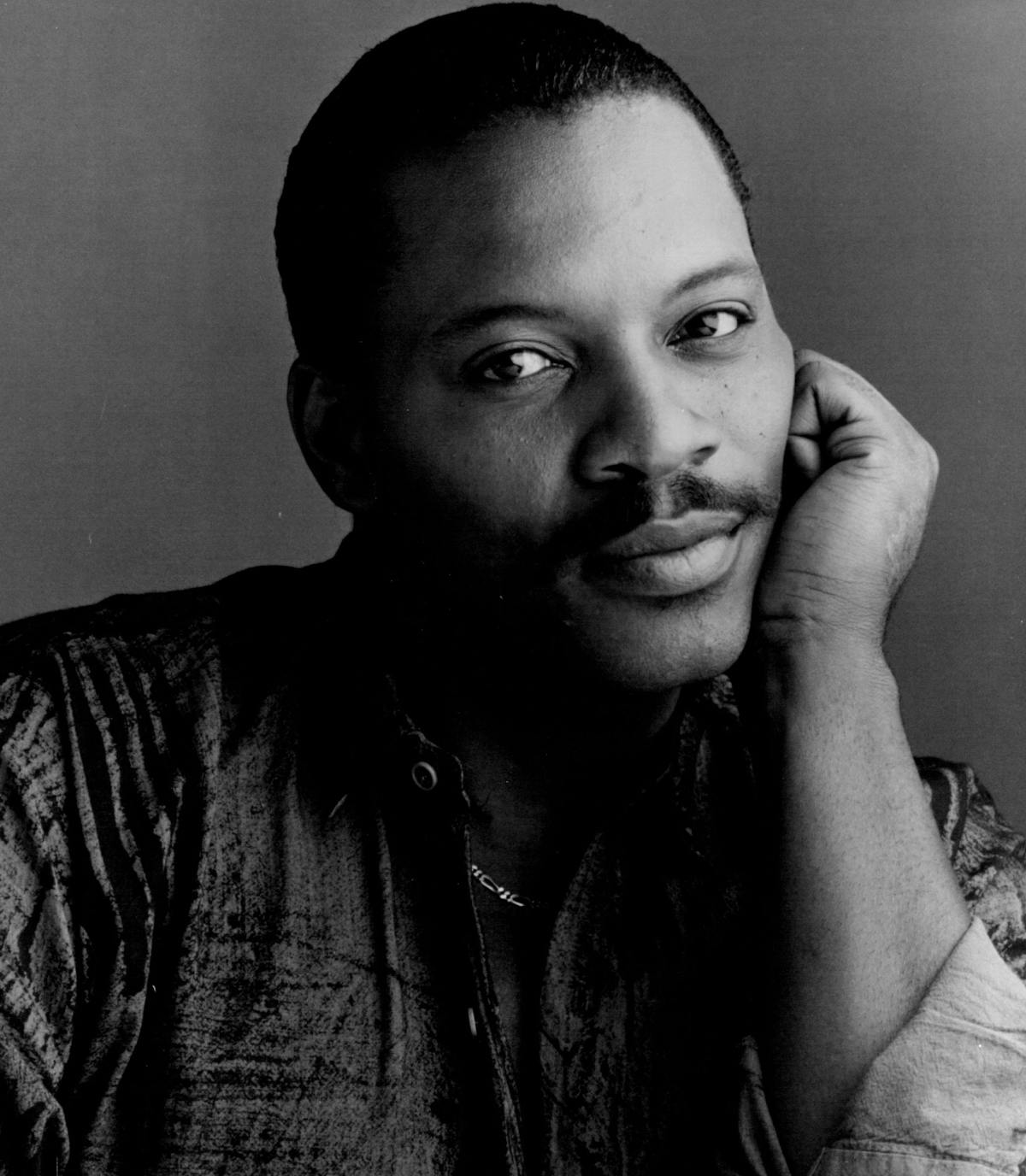
Photo by Roxy Rifkin, provided by Tabu Records.
Alexander O’Neal
An export from Mississippi, he was Flyte Tyme’s frontman circa 1980 but when that group evolved into the Time, he turned down Prince’s offer to be lead singer. Instead, he took to Twin Cities clubs, captivating audiences with his suave soulfulness. O’Neal’s time finally came with a string of R&B smashes starting in 1985, including “Fake,” “Criticize” and “Saturday Love” (a duet with Cherelle) — all written and produced by his ex-Flyte Tyme bandmates Jimmy Jam and Terry Lewis. Hugely popular in England, the enduring romantic soul man eventually moved there and continues to perform and record.
“He is one of the purest soul music vocalists to ever represent the Minneapolis Sound. His ability to transition from ballads to dance music made his songs chart-toppers. Alexander is a throwback to greats like Jackie Wilson, Sam Cooke and other singers whose stage presence elevated their musical status and legacy.”
—Pete Rhodes, co-founder of Minnesota Black Music Awards and co-owner of WRNB satellite TV
Listen on Youtube
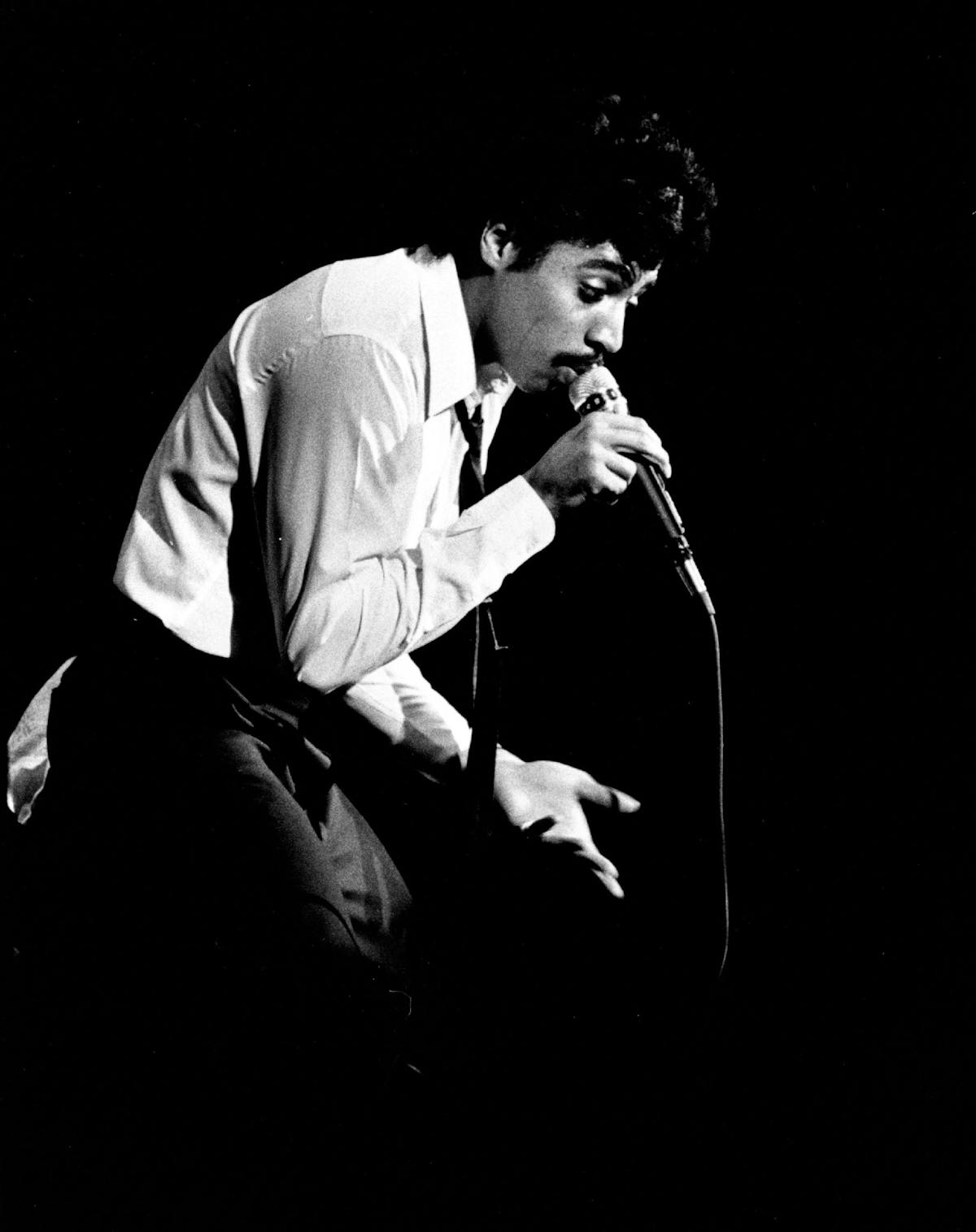
Photo by David Brewster, Star Tribune.
The Time
After Morris Day helped childhood pal Prince write the 1980 song “Partyup,” the Purple One decided to create a band featuring Day as a cartoonish Casanova. Conceived as Prince’s R&B alter ego, the Time became a sensation with irresistible, Prince-penned grooves including “Get It Up” and “Cool.” Day’s profile rose as Prince’s rival in the 1984 movie “Purple Rain,” which featured the Time hit “Jungle Love.” The members reunited for Prince’s 1990 movie “Graffiti Bridge” and the 2011 album “Condensate.” The ageless Lothario Day continues to lead an incarnation with original bandmates Jellybean Johnson and Monte Moir.
“The Time was pure funk, narcissism and joy. A combination of the Minneapolis Sound and humor. Their live show could make you dance, laugh and hand-signal C-O-O-L. #SomebodyBringMeAMirror.”
—Fancy Ray McCloney, Minneapolis comedian and pitchman
Listen on Youtube
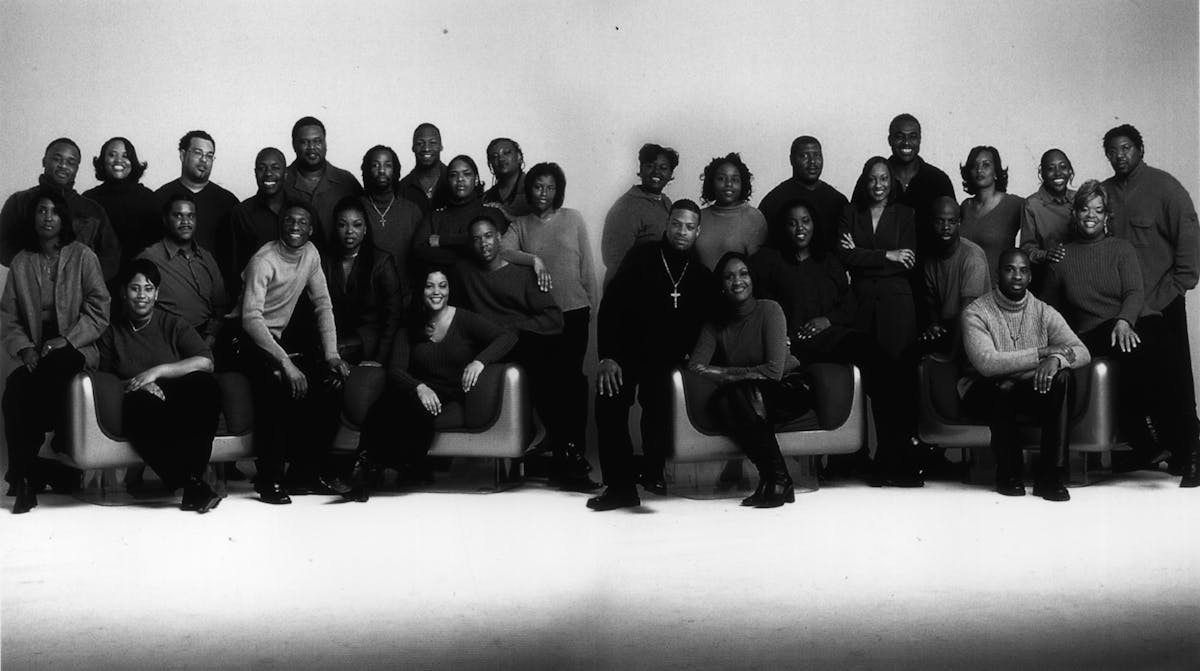
Provided photo by Marc Norberg.
Excelsior
Like Sounds of Blackness, this enormous choir from north Minneapolis planted a new seed for gospel music and an impressive family tree of musicians. A community group since the late ’70s, it went national with the 2001 album “God @ Work,” a Kirk Franklin-like blend of contemporary hip-hop and R&B with traditional spiritual rave-ups that earned a Stellar Award for best new artist. The follow-up, “Soul Interpretations,” landed a Grammy nomination. Alumni include Darnell Davis, Tonia Hughes, Stacey Jones and co-founder Bobby Joe Champion, who traded his work in the House of God to serve in the Minnesota Legislature.
“Under the dynamic direction of now-Sen. Bobby Joe Champion, Excelsior consistently brought electrifying excellence and fire everywhere they sang. Their energy and intensity was astounding.”
—Gary Hines, director of the Sounds of Blackness since 1971
Listen on Youtube
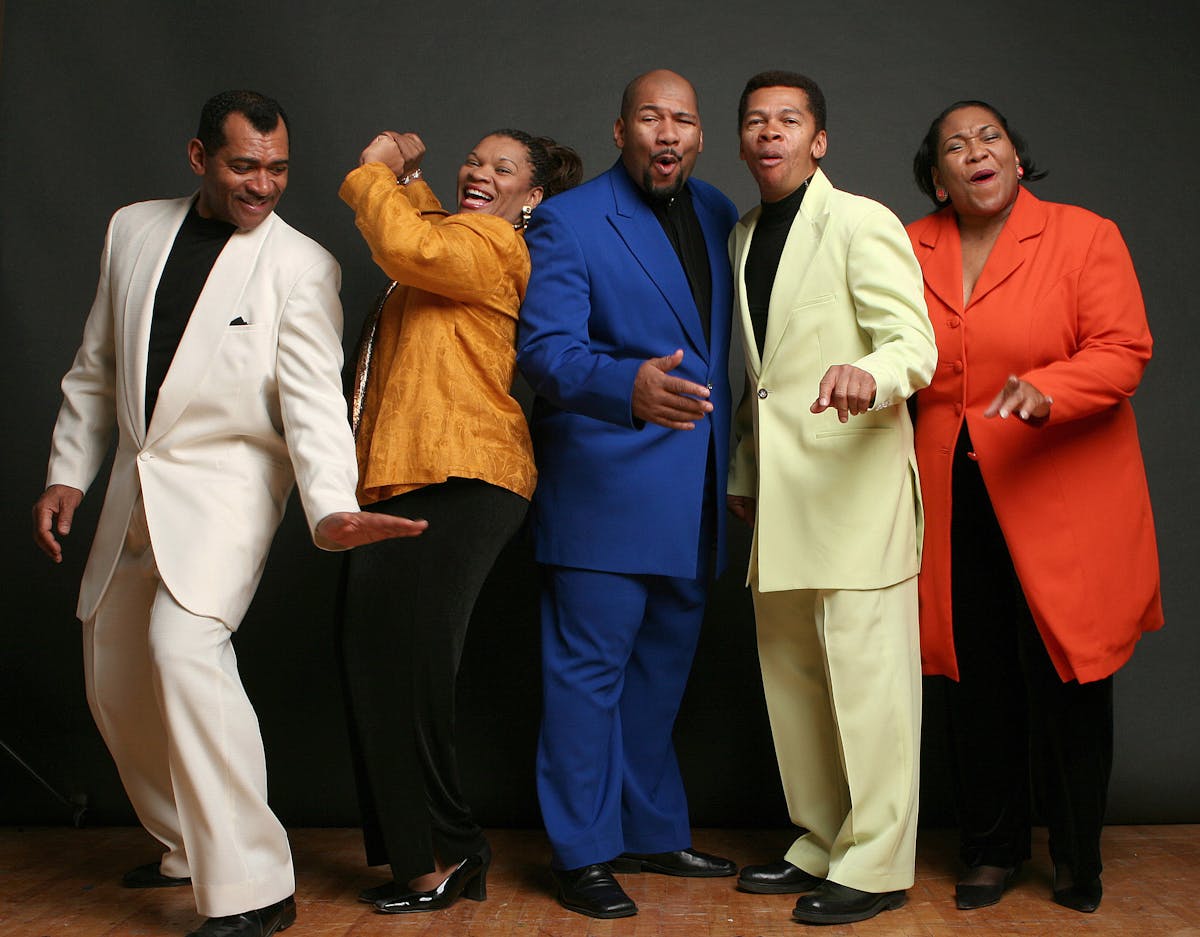
The Steele family singers, from left: Fred, Jevetta, Billy, J.D. and Jearlyn Steele. Photo by Tom Wallace, Star Tribune.
The Steeles
As kids, they sang gospel in Gary, Ind., while across town another soon-to-be-famous family group, the Jacksons, performed pop-soul. It wasn’t until the Steele siblings followed eldest brother J.D. to Minneapolis in the early 1980s that they pursued music professionally. J.D., Fred, Jearlyn, Jevetta and Billy earned a reputation as a gospel group, made a splash in the Guthrie-launched musical “The Gospel at Colonus” and ended up working with Prince, Mavis Staples, George Clinton and many other stars. An uplifting spirit, heavenly voices and magnetic personalities have made them a Minnesota institution.
“Their dynamic blend and harmonies, accompanied with their genuine love for singing, shine every time. They are important because they taught musicians how to make music more business-oriented. They have reached masses with their talent and have been influential to many musicians in the Twin Cities.”
—Tonia Hughes, gospel singer and actress
Listen on Youtube
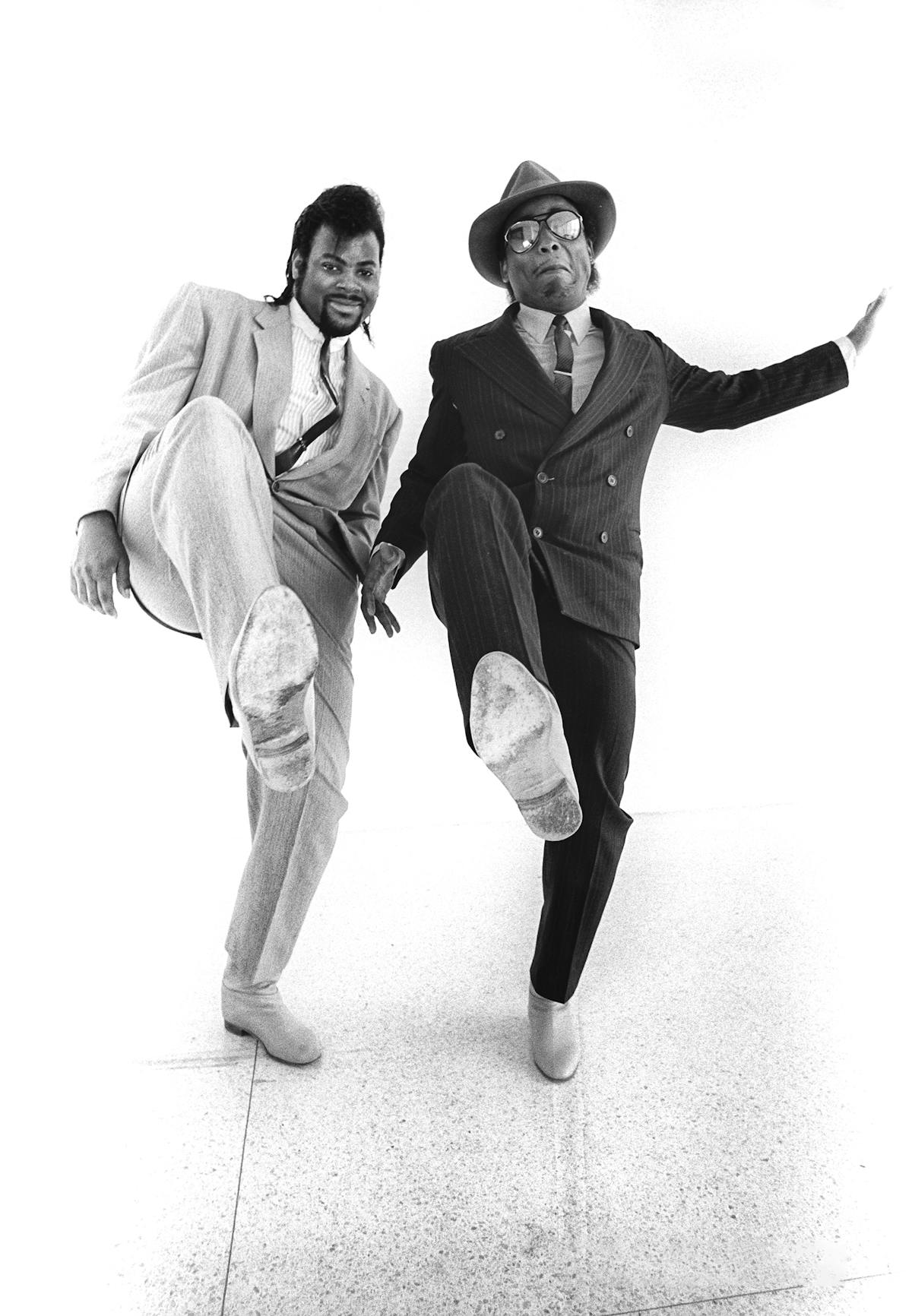
Provided photo by Greg Helgeson from his book, 'Hijinx and Hearsay.'
Jimmy Jam & Terry Lewis
While bandmates in the Time in 1983, the keyboardist and bassist got snowbound in Atlanta producing a song for the S.O.S Band and missed a Time gig. “You’re fired,” said their boss Prince. So they became full-time producers and songwriters. Applying their secret chili sauce to records by Janet Jackson, Boyz II Men, Mariah Carey and dozens of other stars, Jam and Lewis rank as the most successful production duo in pop history, amassing 16 No. 1 pop songs and 26 No. 1 R&B tunes. Most were recorded in the Twin Cities before they moved to L.A. in 2005. Their first album as “recording artists,” featuring guest vocalists, is due this year.
“The enduring super producers are important for forging deeper musical relationships with singers and groups they introduced us to as new artists. Jam and Lewis changed the definition of R&B in the ’80s, and their take on music is still being felt today.”
—Freddie Bell, veteran DJ and radio executive, now general manager at KMOJ
Listen on Youtube
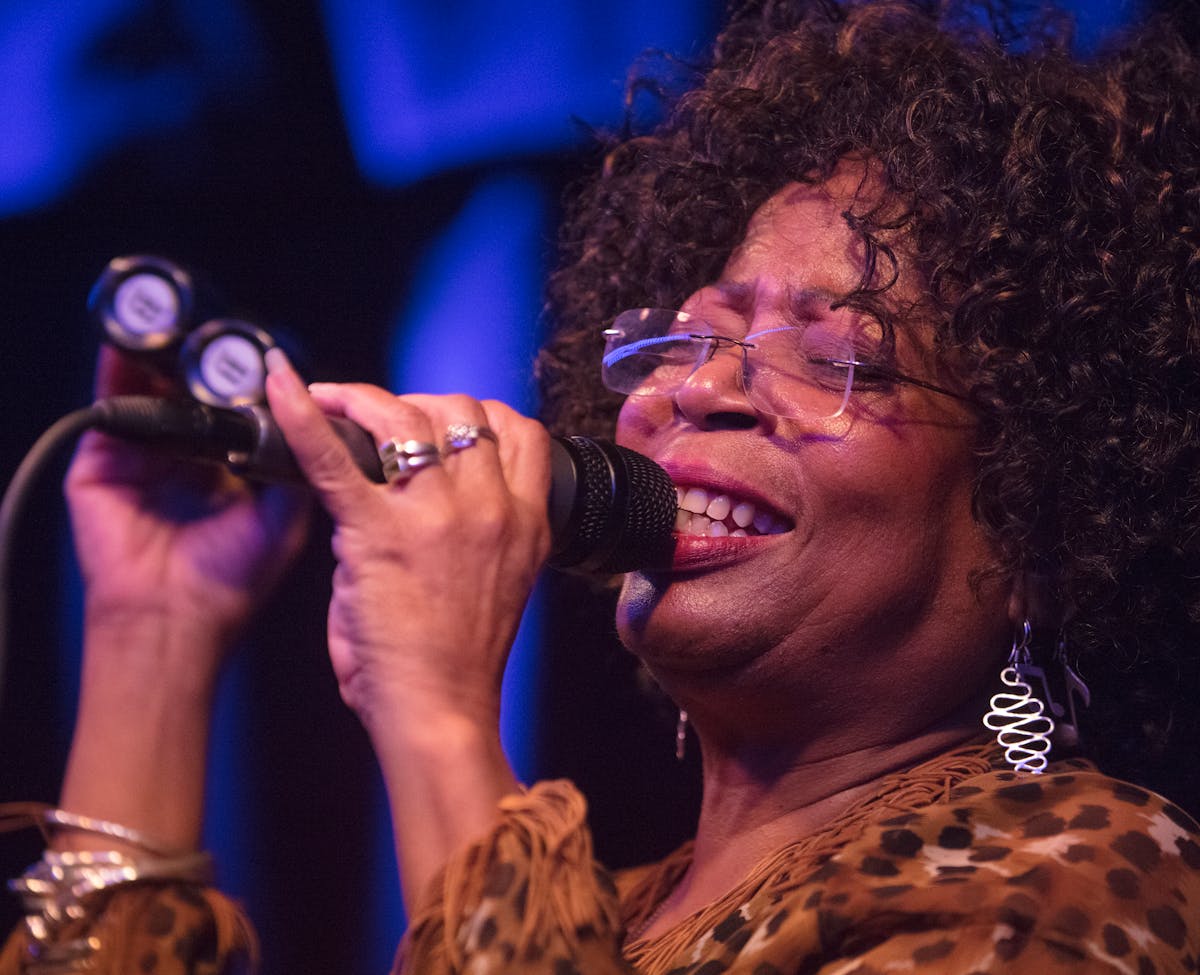
Photo by Tom Wallace, Star Tribune.
Debbie Duncan
After moving to Minnesota in 1984 to join Rupert’s Orchestra, the Detroit-reared vocalist built a reputation as not only a remarkably versatile vocalist but the hardest working singer in town, sometimes doing three gigs a day in the 1990s. By the new millennium, she concentrated on jazz and teaching, earning the deserved sobriquet of Minnesota’s First Lady of Song. When she wasn’t onstage, she was often in an audience somewhere, supporting performers of all stripes. Duncan died in 2020 at age 69.
“Funny, caring and unique are just a few adjectives used to describe Debbie Duncan but it was her quiet, constant support of musicians and the venues who house them that stand out. She was authentically invested in this community every day.”
—Jearlyn Steele, singer with the Steeles, solo artist and WCCO Radio host
Listen on Youtube
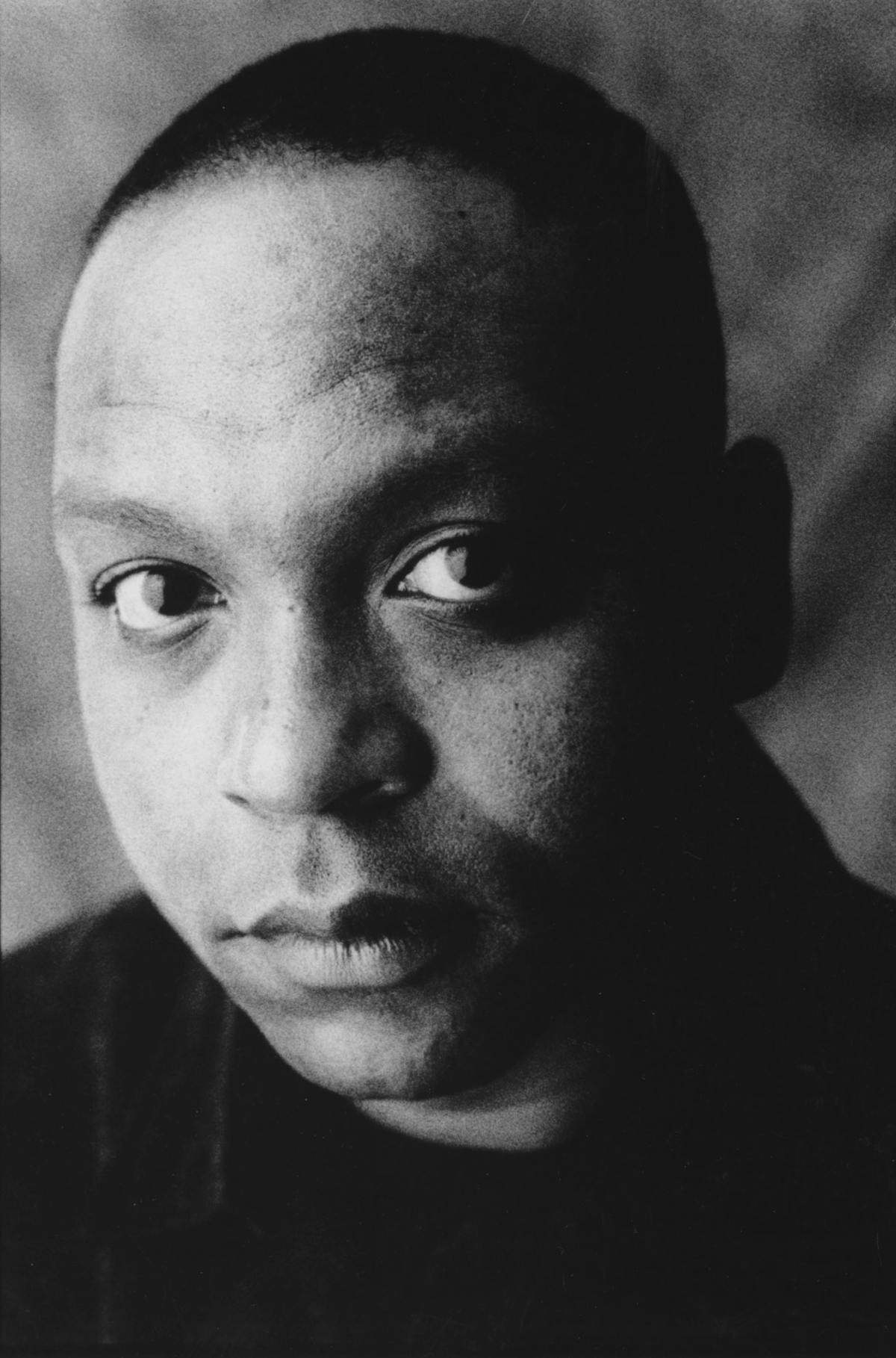
Provided photo.
Anthony Cox
At 19, after seeing jazz great Charles Mingus at the Guthrie Theater in 1973, Cox decided to seriously pursue upright bass. Two years at the University of Wisconsin-Eau Claire was enough before the young bassist went to school gigging in the jazz epicenter, New York City. A world-class player, he’s graced groups led by Joe Lovano, Charles Lloyd, Geri Allen, John Scofield, Elvin Jones and Henry Threadgill as well as his own ensembles. In the early ’90s, Cox returned to his native Minneapolis, showing why he has a reputation for stretching parameters. His discography includes more than three dozen albums.
“On the exterior, he’s a quiet, unassuming man but once behind his bass a whole different persona emerges. His playing draws out such a wide breadth of ethereal emotions, fiery passion yet pensive, wild abandon yet soft and contemplative. Anthony possesses a deep knowledge of and passion for music history and theory”
—Bobby Commodore, jazz drummer with Moore by Four and Ginger Commodore
Listen on Youtube
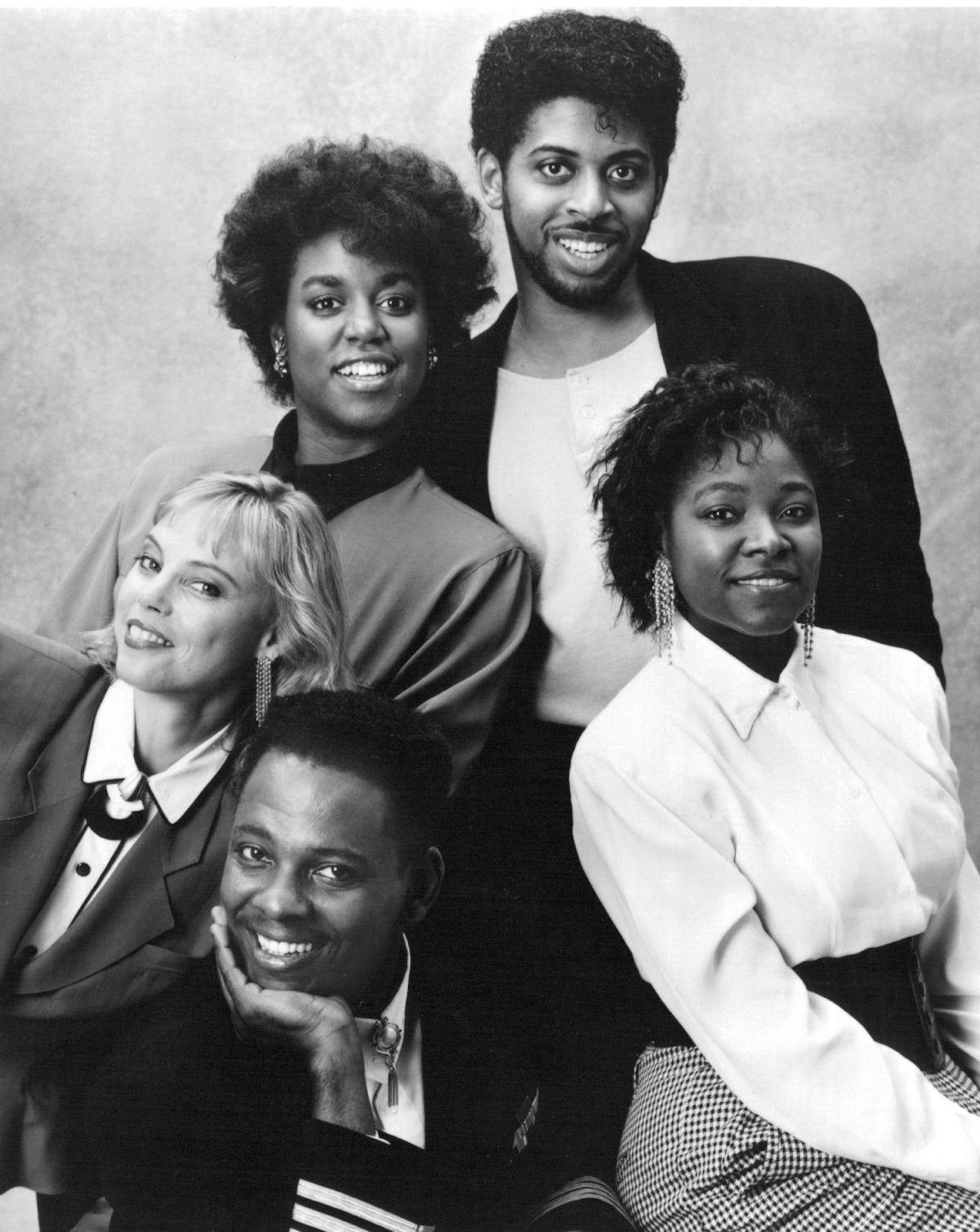
Moore by Four, clockwise from top: Sanford Moore, Ginger Commodore, Dennis Spears, Connie Evingson, Yolanda Bruce. Provided photo.
Moore by Four
Put together for a 1986 show at the experimental Ruby’s Cabaret in Minneapolis, this vocal ensemble led by piano man Sanford Moore quickly blossomed into the Twin Cities go-to group for galas, opening nights and other special occasions. MB4 dazzles with vocalists Yolande Bruce, Ginger Commodore, Connie Evingson and the ever-animated Dennis Spears harmonizing on the arrangements of Moore. Whether reimagining standards, pop hits or holiday chestnuts, Moore by Four has won over audiences at European jazz festivals and throughout the United States.
“Maestro Sanford Moore molded and crafted Moore by Four into a world-class ensemble. Their formidable talent, virtuosity and versatility took Moore by Four across the country and around the world.”
—Gary Hines, director of the Sounds of Blackness since 1971
Listen on Youtube
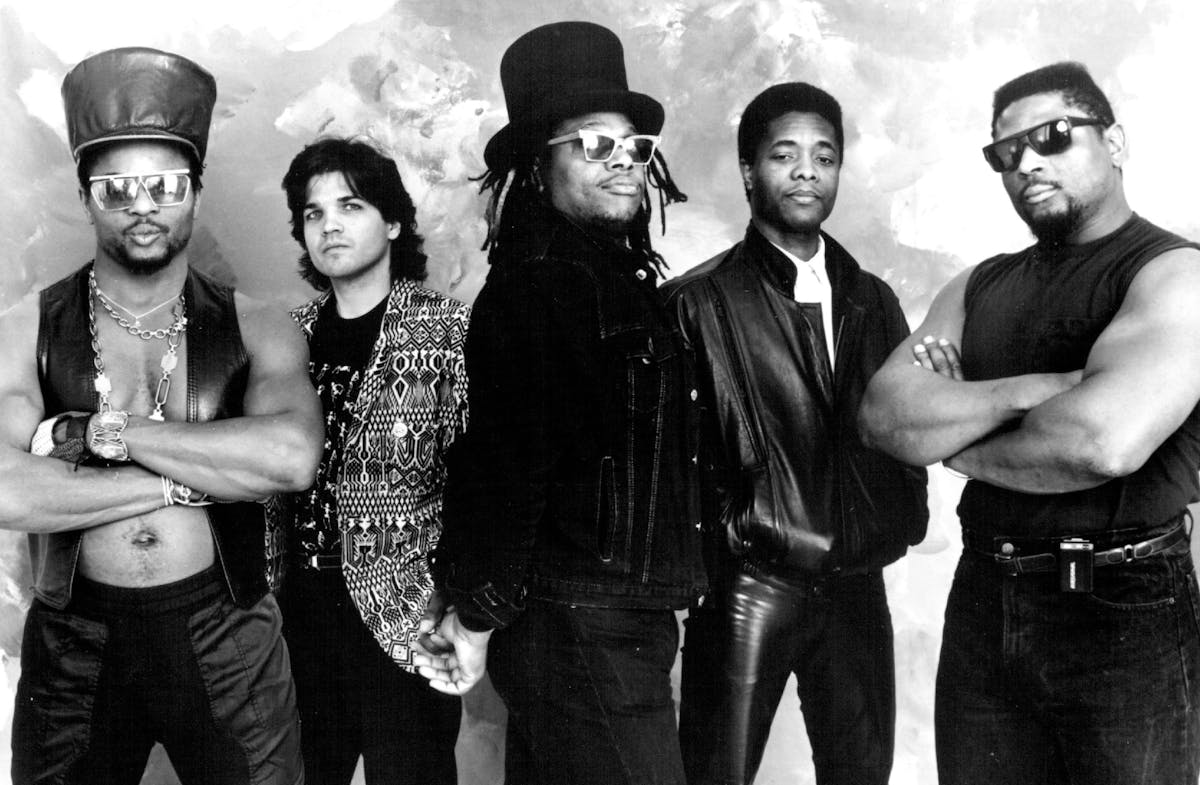
Photo provided by the Good Music Agency, Inc.
Ipso Facto
Raised with a Jamaican immigrant father, bandleader Wain McFarlane and a group of his siblings and cousins (including Greg, Juju and Julita) turned the music of their childhood into Minnesota’s most successful reggae band. In the 1980s, Ipso Facto built on the local scene that Wain helped develop in Peter Nelson’s band Shangoya, blending in more rock and R&B fans via countless gigs at the Cabooze and other clubs, winning 22 Minnesota Music Awards and signing a short-lived deal with Epic Records. They formally split in 1994 but still often find their groove again.
Their live set “was like watching a Target Center-level show at a nightclub. A couple times at the Fine Line, I ended up sitting with Prince at his table in the balcony while they were playing. He was just as excited to see them as I was. Even now, Ipso Facto delivers.”
—Michael Bland, drummer for Prince and Soul Asylum
Listen on Youtube
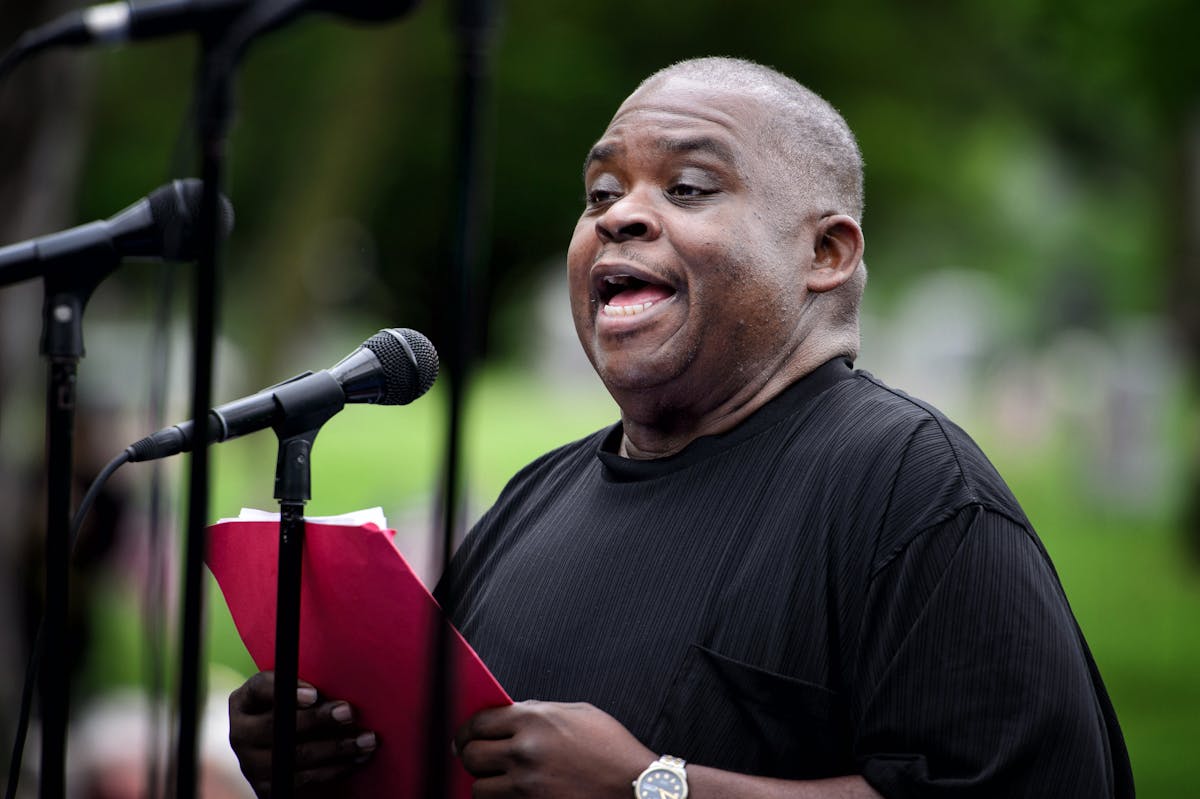
Photo by Glen Stubbe, Star Tribune.
Robert Robinson
He started singing as a child in his pastor/father’s He Is Risen Church of God in north Minneapolis and matured into arguably the finest Twin Cities male vocalist in any style. For more than five decades, music has been his ministry, whether singing at a prison, interpreting “The Star-Spangled Banner” at a sporting event or leading the Twin Cities Community Gospel Choir, which he founded. Over the years, Robinson has expanded his live and recorded repertoire to include the secular along with the sacred. “He’s God’s canary,” piano star Lorie Line once said of the vocal showstopper, who graced her annual holiday spectacles for 15 years.
“The incomparable vocal stylings of Robert Robinson have the power of Pavarotti, the lushness of Luther [Vandross] and the soulfulness of Sam [Cooke]. Robert’s extraordinary tone, texture and phrasing are simply breathtaking.”
—Gary Hines, director of the Sounds of Blackness since 1971
Listen on Youtube
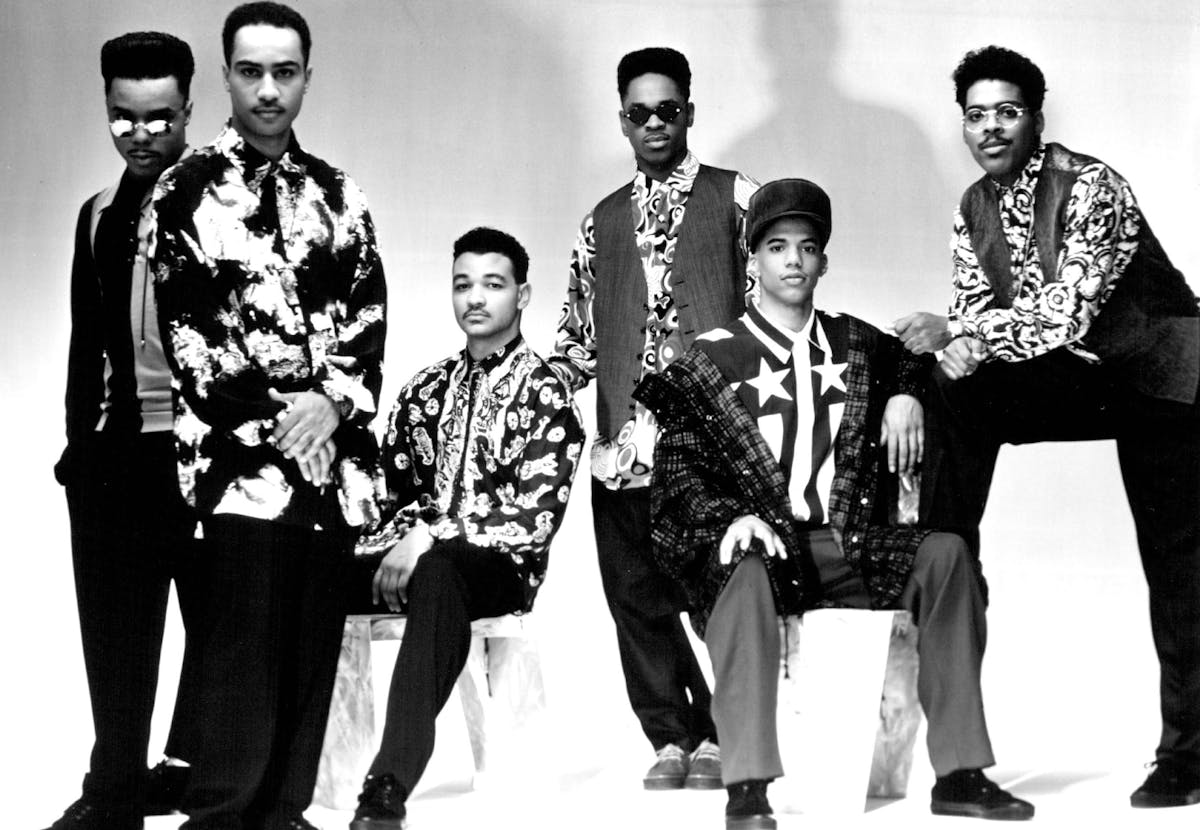
Rick Kinchen, Larry Waddell, Keri Lewis, Stokley Williams, Jeff Allen, Homer O’Dell. Photo by Todd Gray, provided by Perspective Records.
Mint Condition
It was hard to pinpoint this St. Paul sextet’s greatest asset when their Jam-and-Lewis-produced debut landed in 1991. Was it the emotional pop of Stevie Wonderous lead singer Stokley Williams? Was it the fact that they were a groove-breathing R&B band in an era focused on singers? Was it the infectiousness and inventiveness of the breakout song “Breakin’ My Heart (Pretty Brown Eyes)” and subsequent hits “U Got Me Swingin’ ” and “What Kind of Man Would I Be?” (all Top 10 but sadly overlooked by hometown radio)? It was the full package, which — with the band on hiatus and Stokley about to drop a second solo album — seems even rarer now.
“They were simply predestined for greatness. Too good, too strong. I always felt Stokley was the second coming of Maurice White.”
—Michael Bland, who drummed early on with Mint in concert
Listen on Youtube
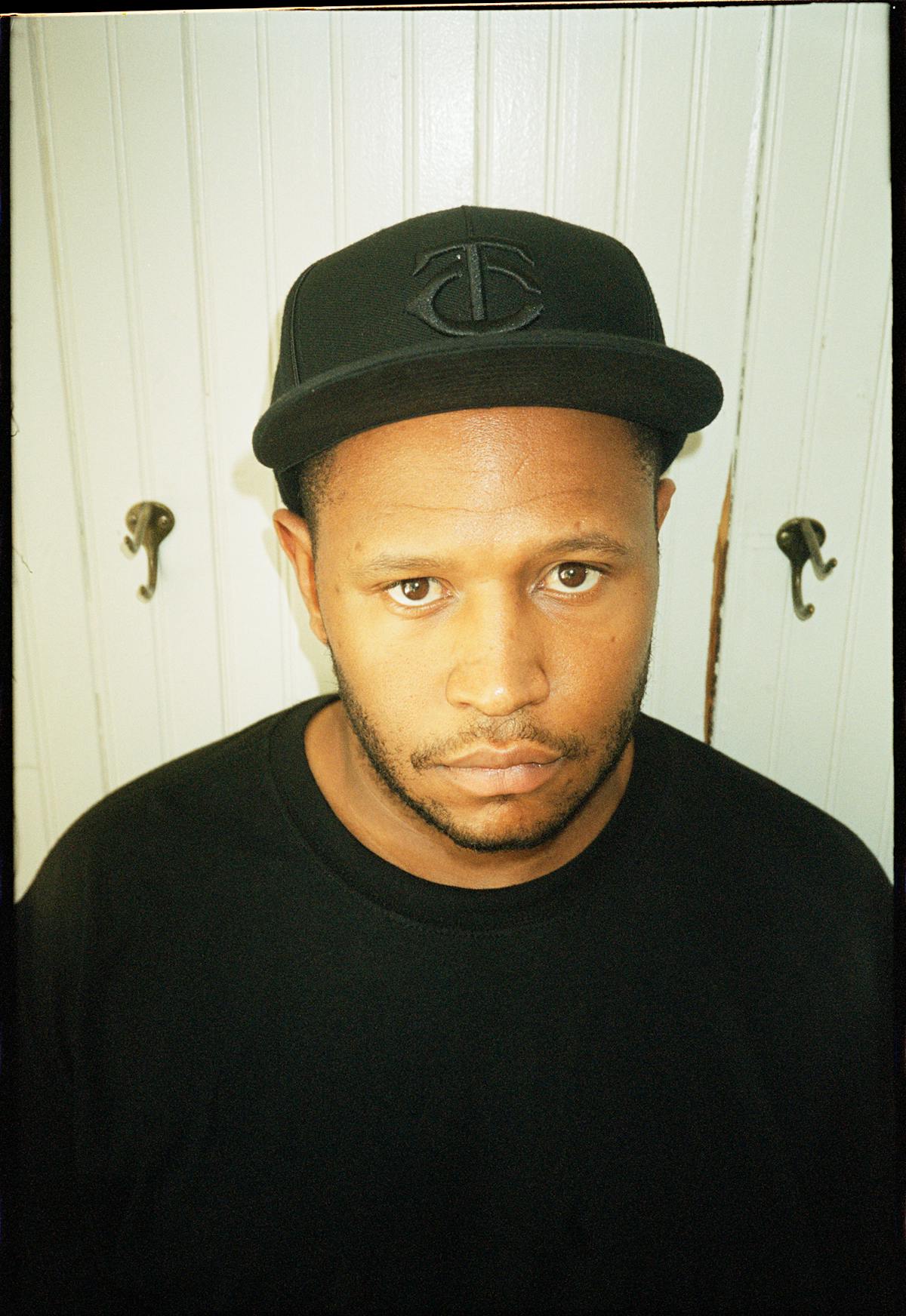
Provided photo by Dan Monick.
I Self Devine
One of the first local rappers to garner attention outside Minnesota with his old group Micranots, Minneapolis native Chaka Mkali has maintained a laserlike focus on his community. His albums for the Rhymesayers label, particularly 2005’s “Self Destruction,” warned of the abuse and racial disparities now boiling over in the Twin Cities. Those records also dared every Minnesota rapper to make bolder statements with their lyrics, a goal that I Self has also pressed for as an educator, youth mentor and visual artist (the latter soon to be on display in the Mia exhibit “Rituals of Resilience”).
“I Self Devine has been a foundational member of Twin Cities hip-hop history. An artist, activist, educator and graffiti artist, he bridges the worlds of art, music and politics into incredible art installations. His records and art are always celebrations of Black history and Black culture, paying respect to his ancestors.”
—Jon Jon Scott, Sound Vérité Records label proprietor, promoter, artist manager
Listen on Youtube
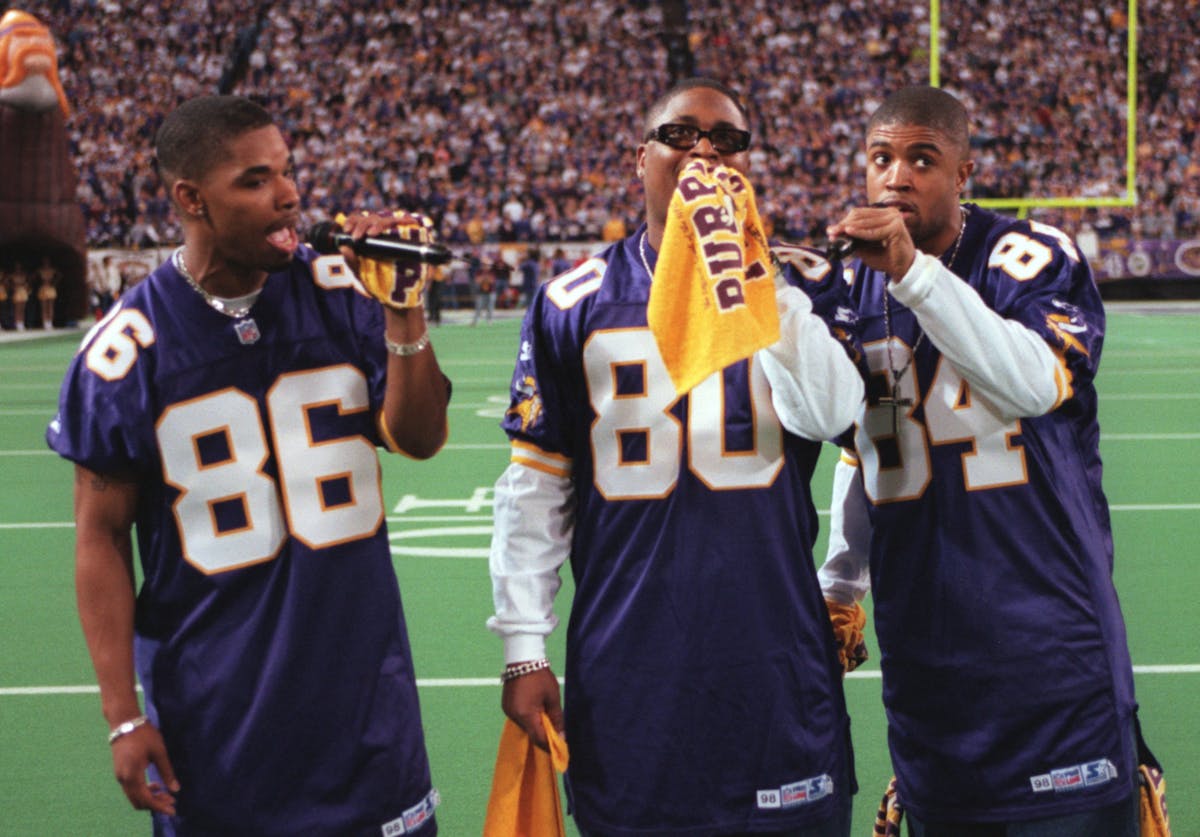
Next, from left: Tweety, T-Low, R.L. Photo by Jeff Wheeler, Star Tribune.
Next
Don’t call them a one-hit wonder. The Minneapolis-reared vocal trio of R.L., T-Low and Tweety actually racked up two No. 1 R&B singles: 1997’s “Too Close” and 2001’s “Wifey,” both libidinous yet virtuous slow jams. They sold 2 million copies of their debut, “Rated Next,” and went on to duet with Beyoncé on the Destiny’s Child track “If You Leave” and Tupac on the posthumous single “Until the End of Time.” As breakout hits go, “Too Close” was truly gigantic, topping Billboard’s year-end ranking in all of pop, earning numerous award nominations and landing on many best-of-’90s playlists.
“The Minneapolis Sound that dominated the music scene in the 1980s was back on top at the end of the 1990s thanks to Next and ‘Too Close.’ The fellas followed that with another No. 1 song and their Billboard, Soul Train and American Music Awards wins and nominations, cementing their legacy.”
—Derrick Stevens, producer for Minnesota Public Radio/The Current and former MC Skat Kat
Listen on Youtube
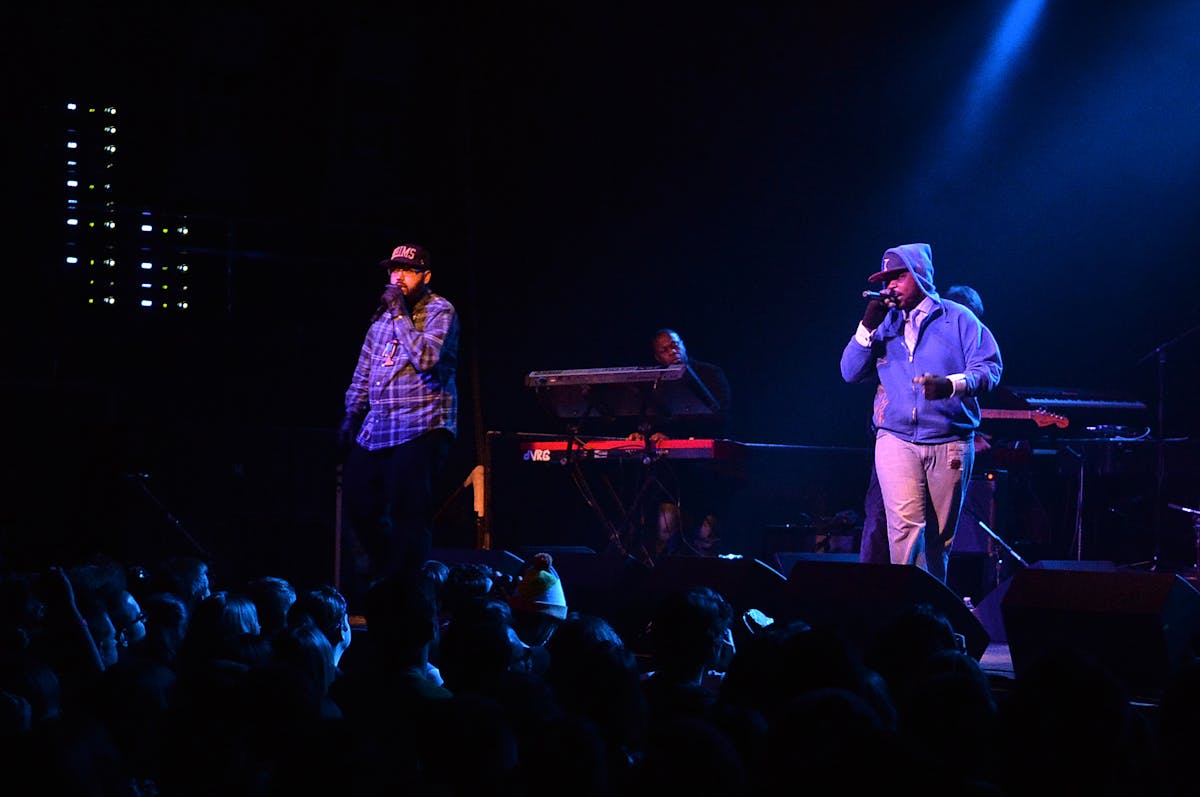
Photo by Bre McGee, special to the Star Tribune.
Heiruspecs
A band of St. Paul Central classmates just like Mint Condition — Mayor Melvin Carter III was also in their crew — they played a big role in making Minnesota hip-hop more of a live art form. Wordsmith rappers Felix (Chris Wilbourn) and Muad-dib (Jon Harrison) deftly molded their often celebratory and determined lyrics to the four-man backing unit’s funky, Roots-style instrumentation, leading to a national record deal for the 2004 album “Tiger Dancing.” Their live shows shaped similar configurations by Atmosphere and Dessa and remained the group’s main attraction for 24 years and counting. A new album is on the way.
“They’ve had the unique opportunity of creating universally appealing music while exposing many all-white spaces to their Black members — thus opening doors for many other Black musicians to be seen in new venues that helped propel their status.”
—Toki Wright, Minneapolis-reared rapper, producer and educator; chair of Berklee College of Music’s Professional Music Department
Listen on Youtube
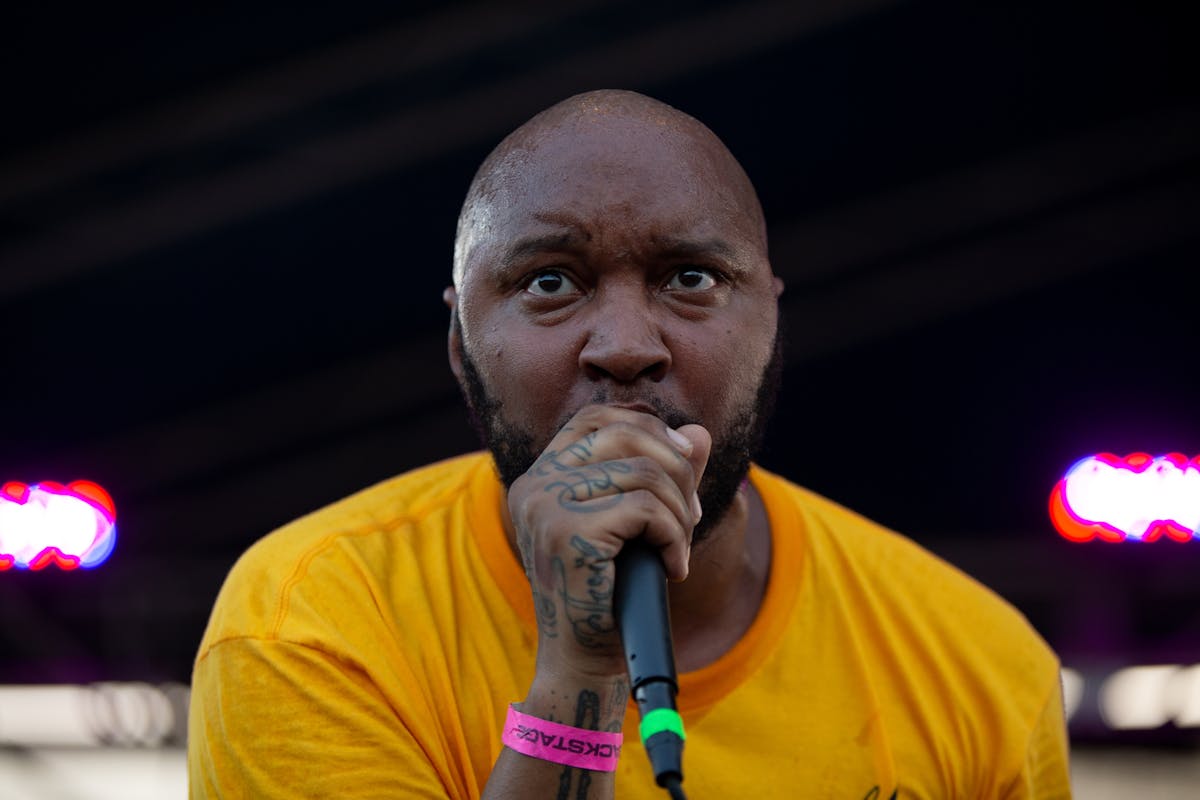
Photo by Alex Kormann, Star Tribune.
P.O.S.
“No one will ever be like me,” Stefon Alexander rightfully declared on his second album in 2006. A former Hopkins skater boy, he melded punk-rock roar with classic boom-bap hip-hop beats, a hybrid befitting someone born the first year of the millennial generation (1981). He brought together the preeminent rap crews Doomtree and Rhymesayers. He cut against the summer rock-fest grain by joining the Warped Tour. He blended old-school rapper bravado with a futuristic call for ending systemic racism and corporate consumerism, culminating in 2012’s pinnacle LP “We Don’t Even Live Here.
“My first impression of him was at a CMJ Festival showcase for Afro-punk in 2010, where he blazed through a highly charged set with Fugazi-like precision. He represents us well on the international stage as a touring artist who spreads love for Minneapolis far and wide. He is a uniquely Twin Cities artist, who has created his own lane.”
—Jon Jon Scott, Sound Vérité Records label proprietor, promoter, artist manager
Listen on Youtube
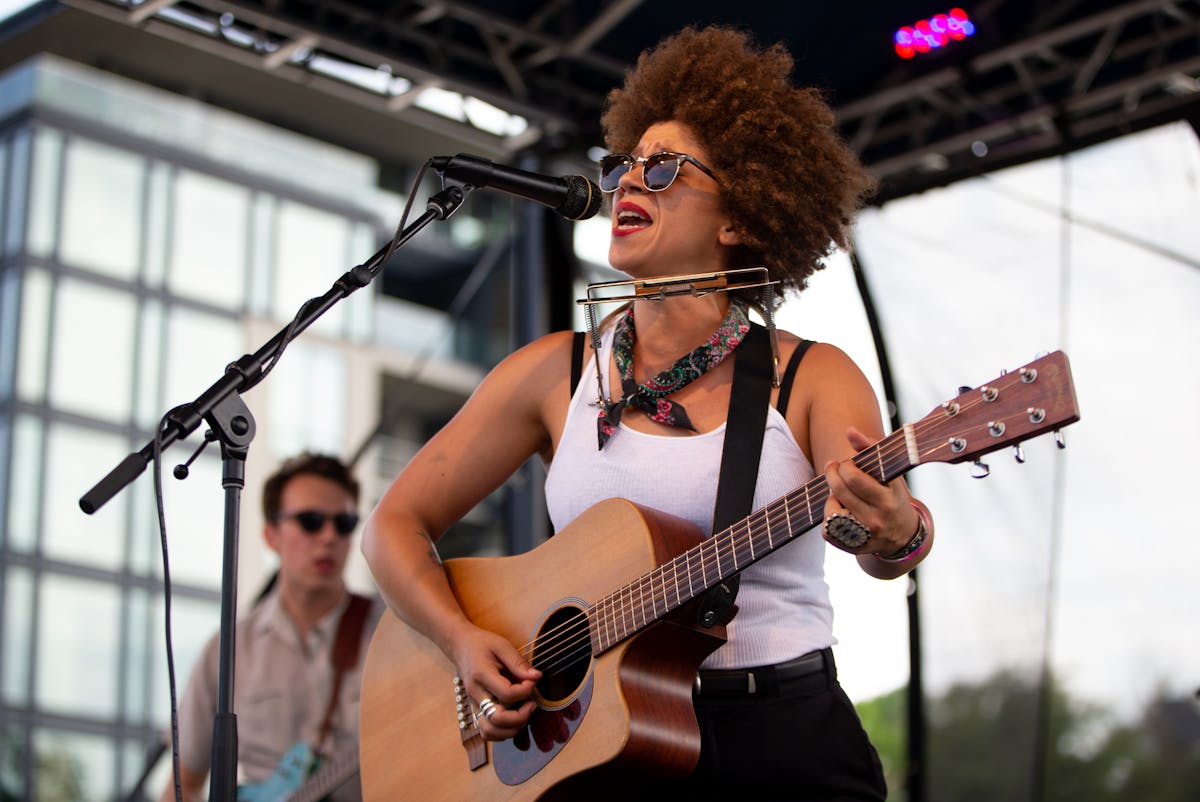
Photo by Alex Kormann, Star Tribune.
Chastity Brown
Since arriving in Minnesota from rural Tennessee in 2006, Brown has made great headway in the Americana music world, a scene nowhere near as diverse as America itself. Her six song-driven albums — including 2017’s “Silhouette of Sirens” with folk/twang label Red House Records — have earned her widespread critical acclaim, public radio airplay and festival gigs. Her earthy voice oozes both power and vulnerability, and her similarly complex lyrics have pressed feminist, LGBTQ and racial issues, including last year’s single “Golden” in reaction to police violence.
“I admire her because of her tremendous gifts, ambition and ability to break barriers in this industry. She defines her own self, style and art through how she tells stories in her songs and her ability to share it with the world. Her love, truth and commitment to her craft is something that people — especially young folks — need to see and can be inspired by.”
—PaviElle, singer and theater star
Listen on Youtube
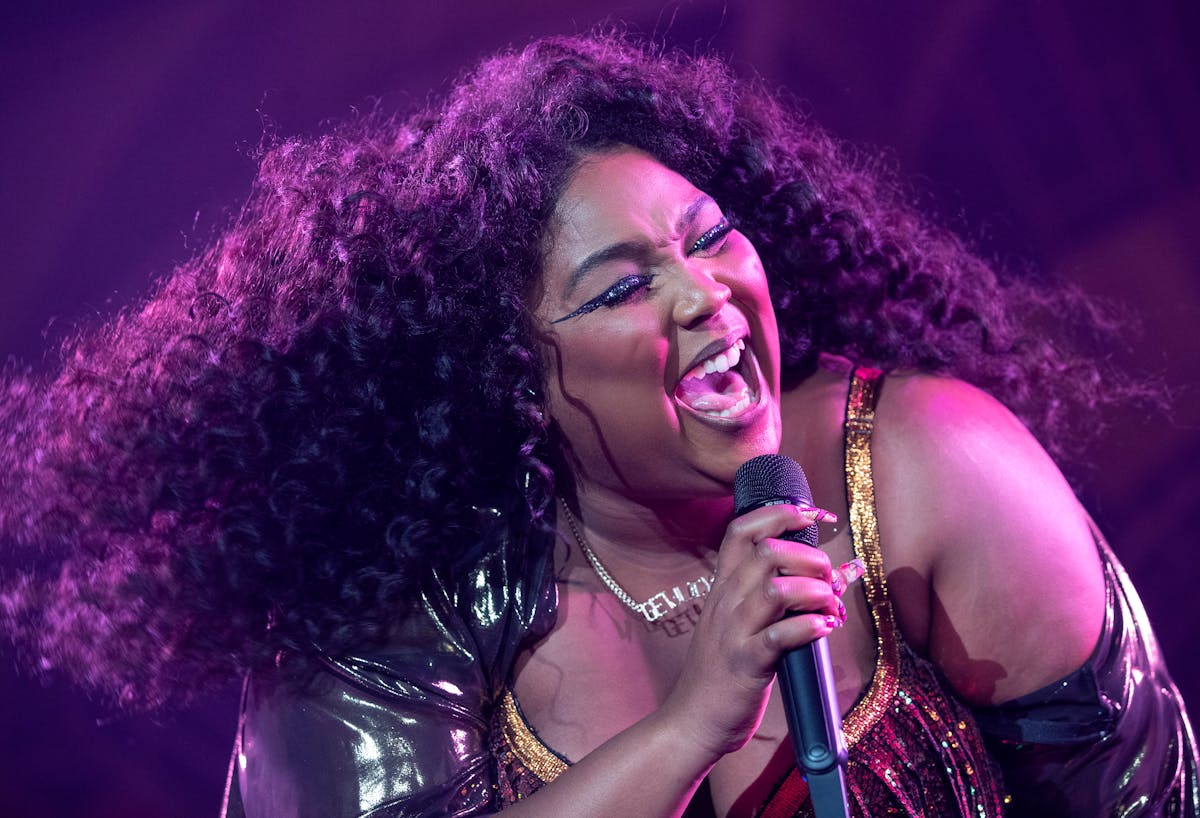
Photo by Carlos Gonzalez, Star Tribune.
Lizzo
Still just the flute-tooting Melissa Jefferson when she arrived from Houston in 2010, Lizzo gave some of her first club performances in Minnesota as a singer and rapper with the Chalice before dropping her solo debut “Lizzobangers” in 2013. By the time she left in 2017 on her way to hitting No. 1 with her Vikings-name-dropping single “Truth Hurts,” she developed a dynamic stage show, sly humor and DIY work ethic that led to her touring with the all-female rock bands Haim and Sleater-Kinney, packing a two-night stand at First Avenue, and recording (and conferring) with Prince. It doesn’t get much more Minnesotan than all that.
“It’s so wild to think we here in Minnesota had Lizzo before the rest of the world. She has not only put out slamming music, but just by her existence as a strong Black woman embracing her body she has helped push the industry into a new era of inclusiveness.”
—Nur-D, Rosemount-raised rapper, aka Matt Allen
Listen on Youtube


